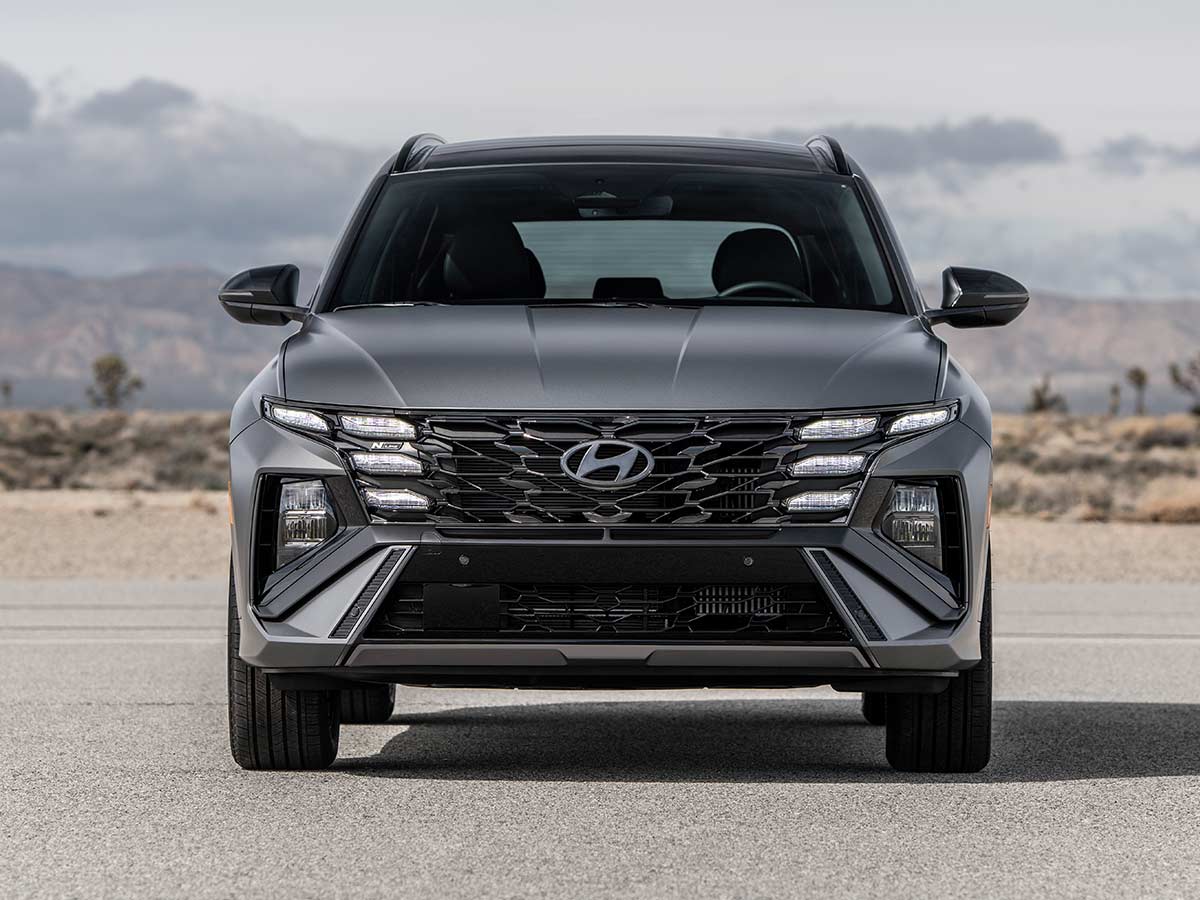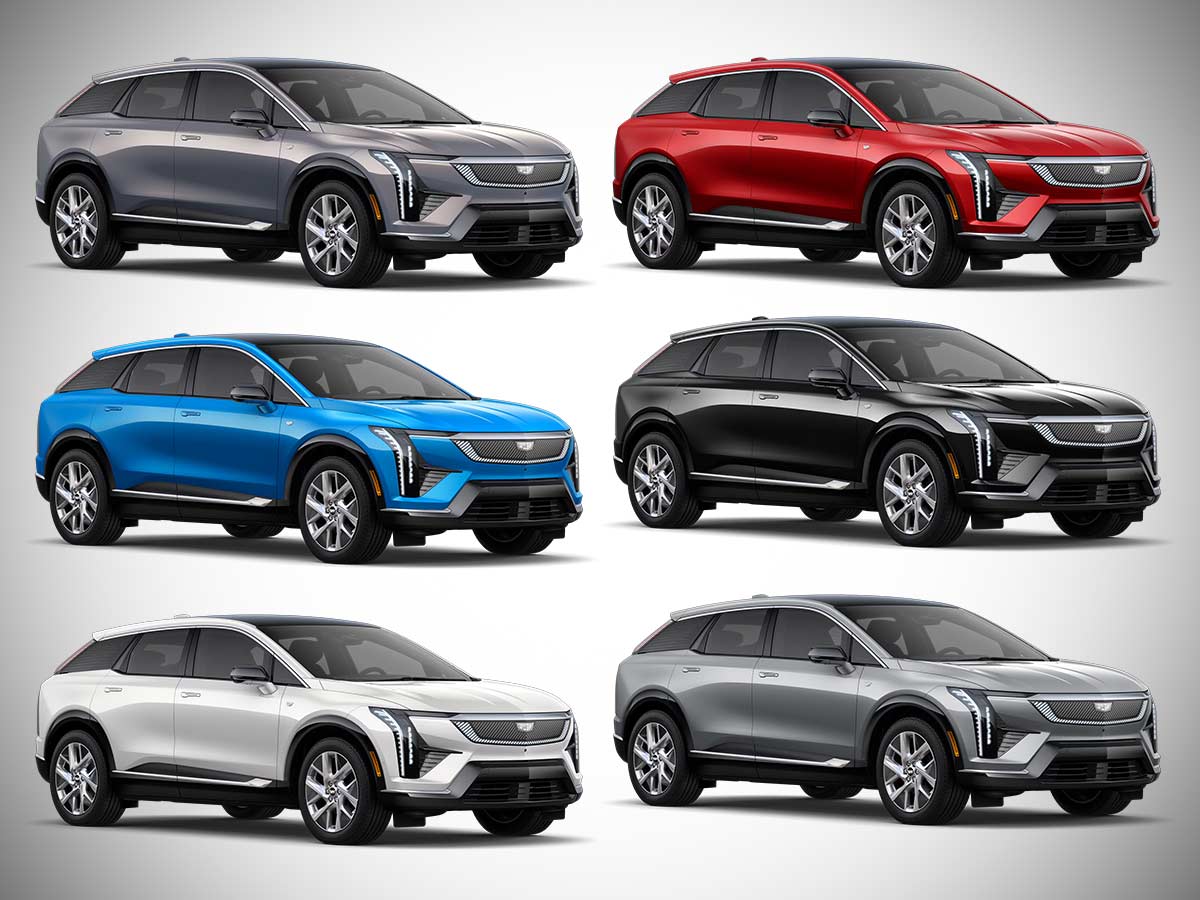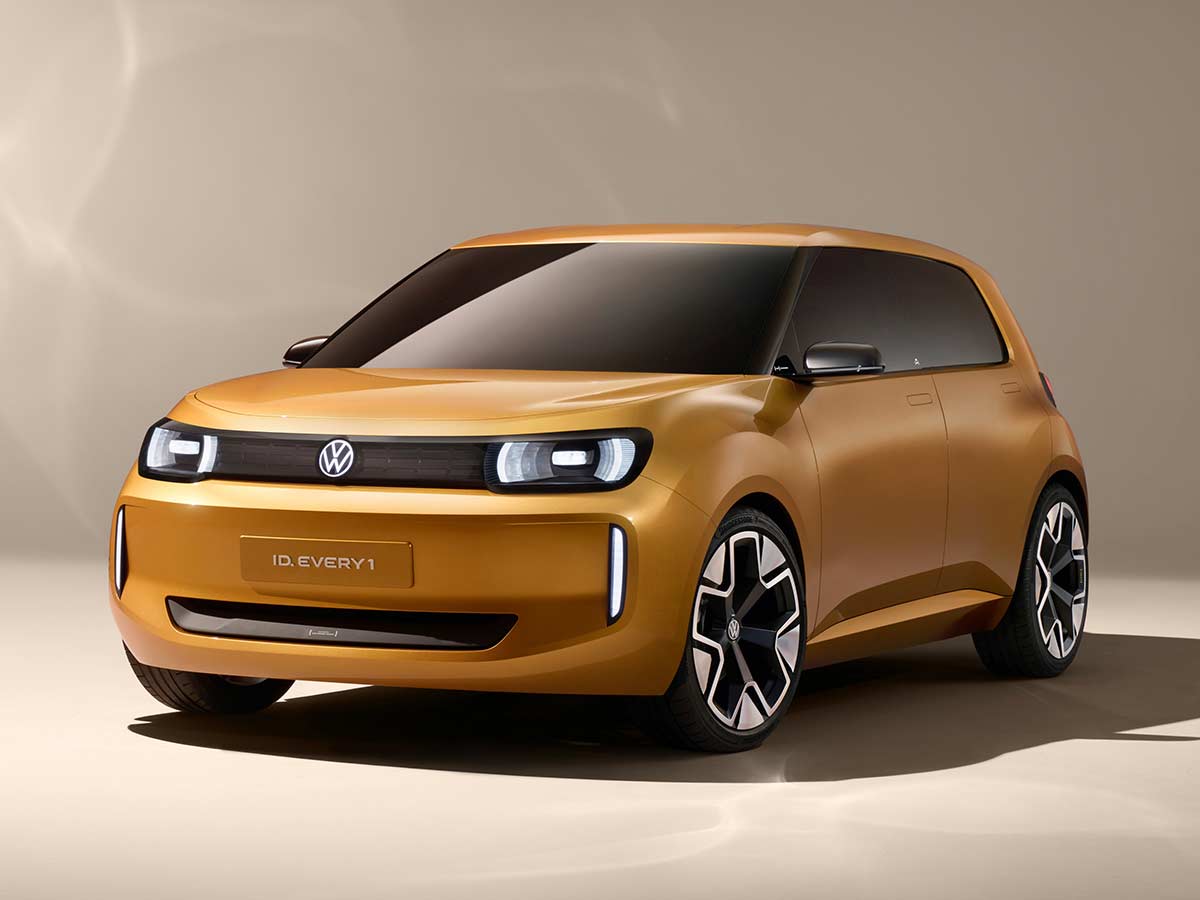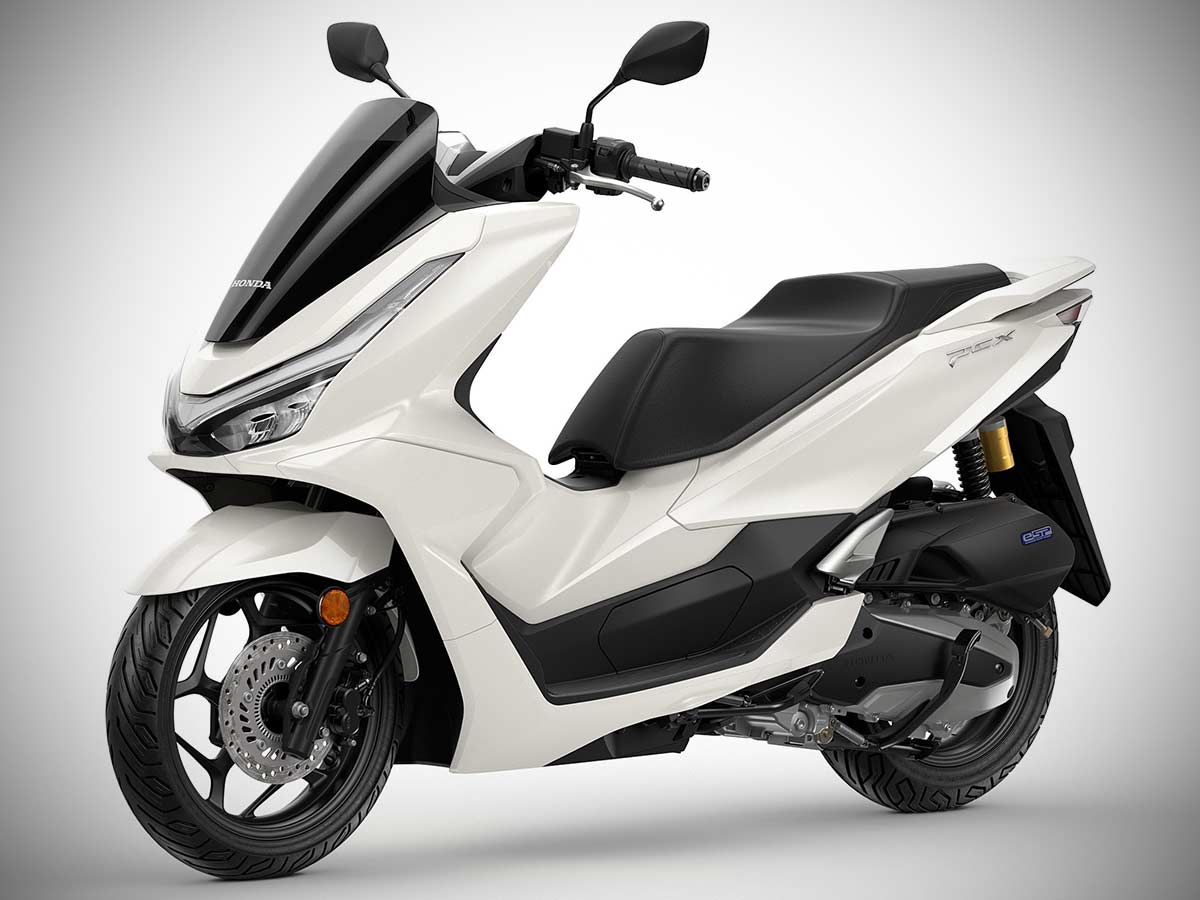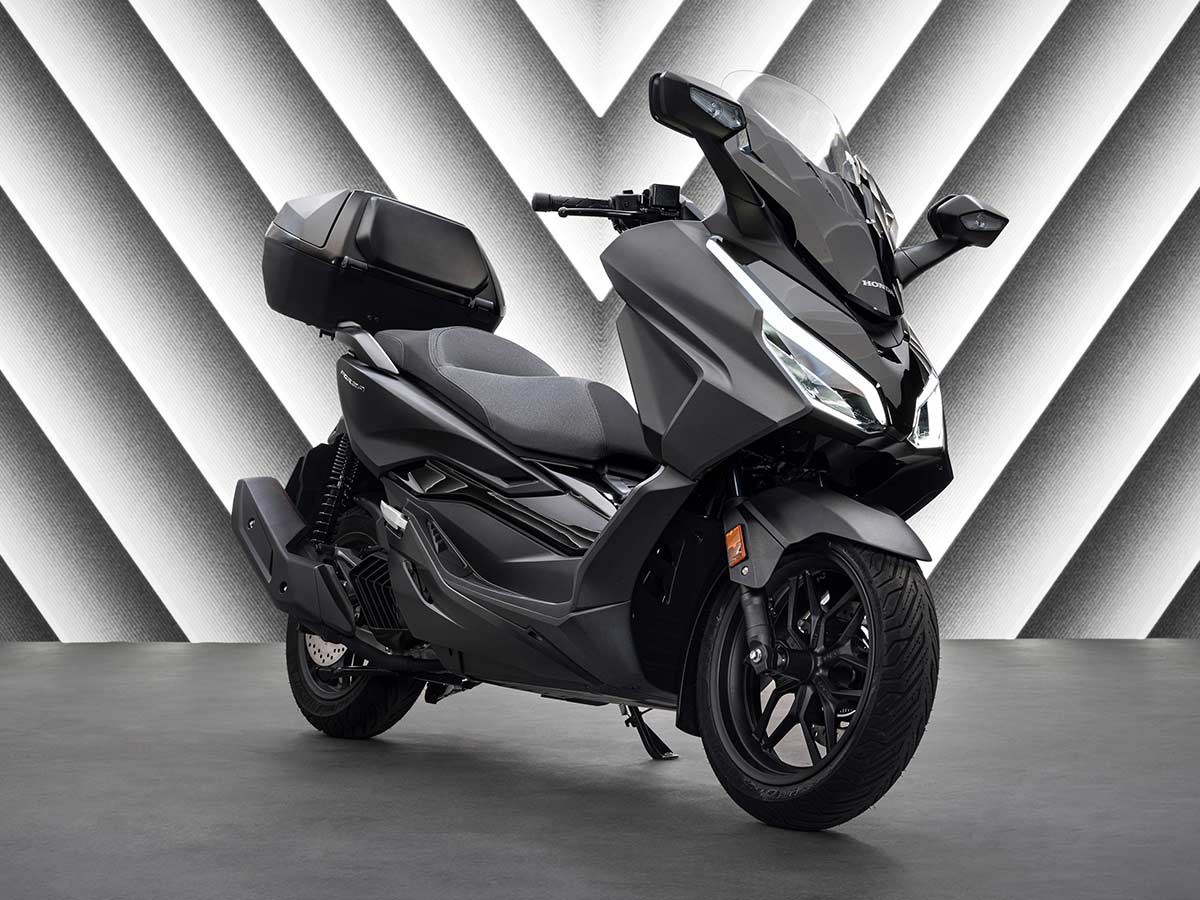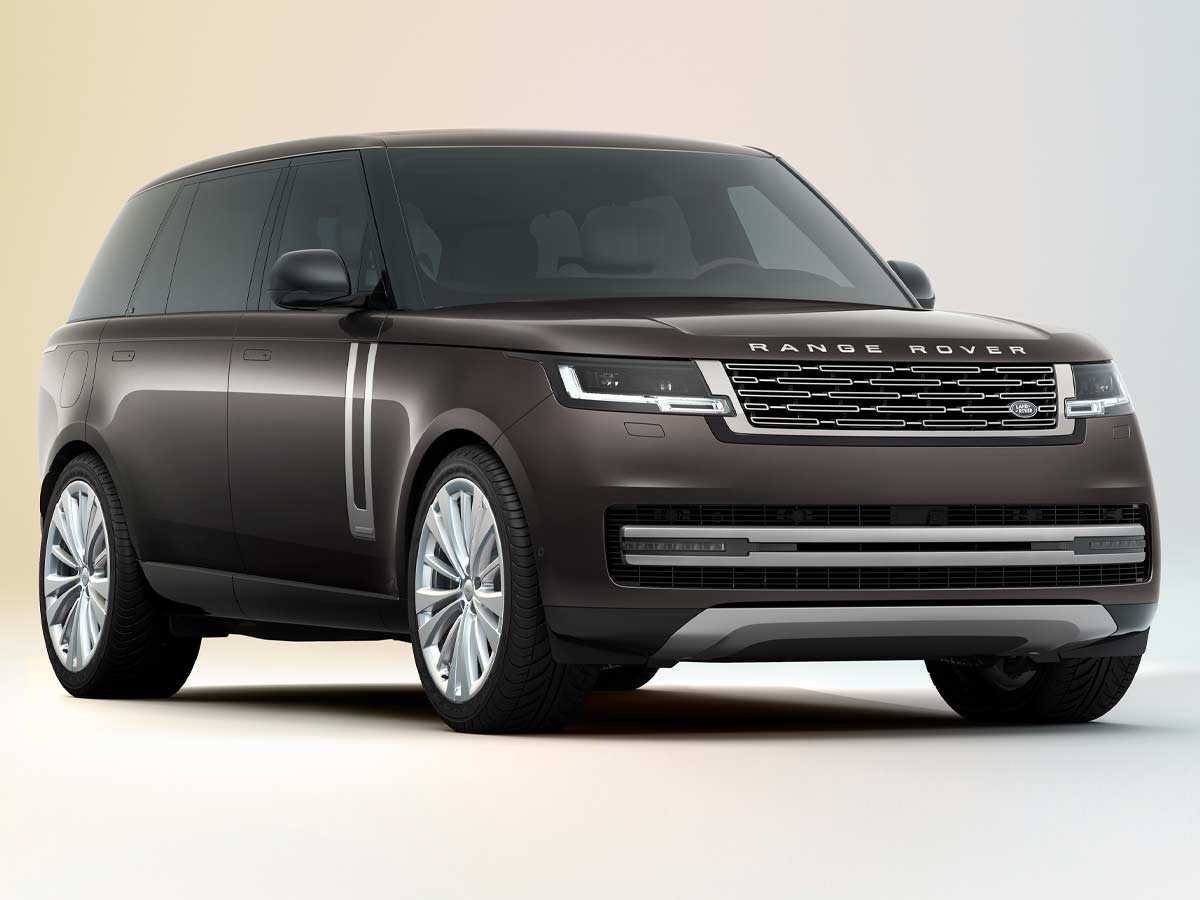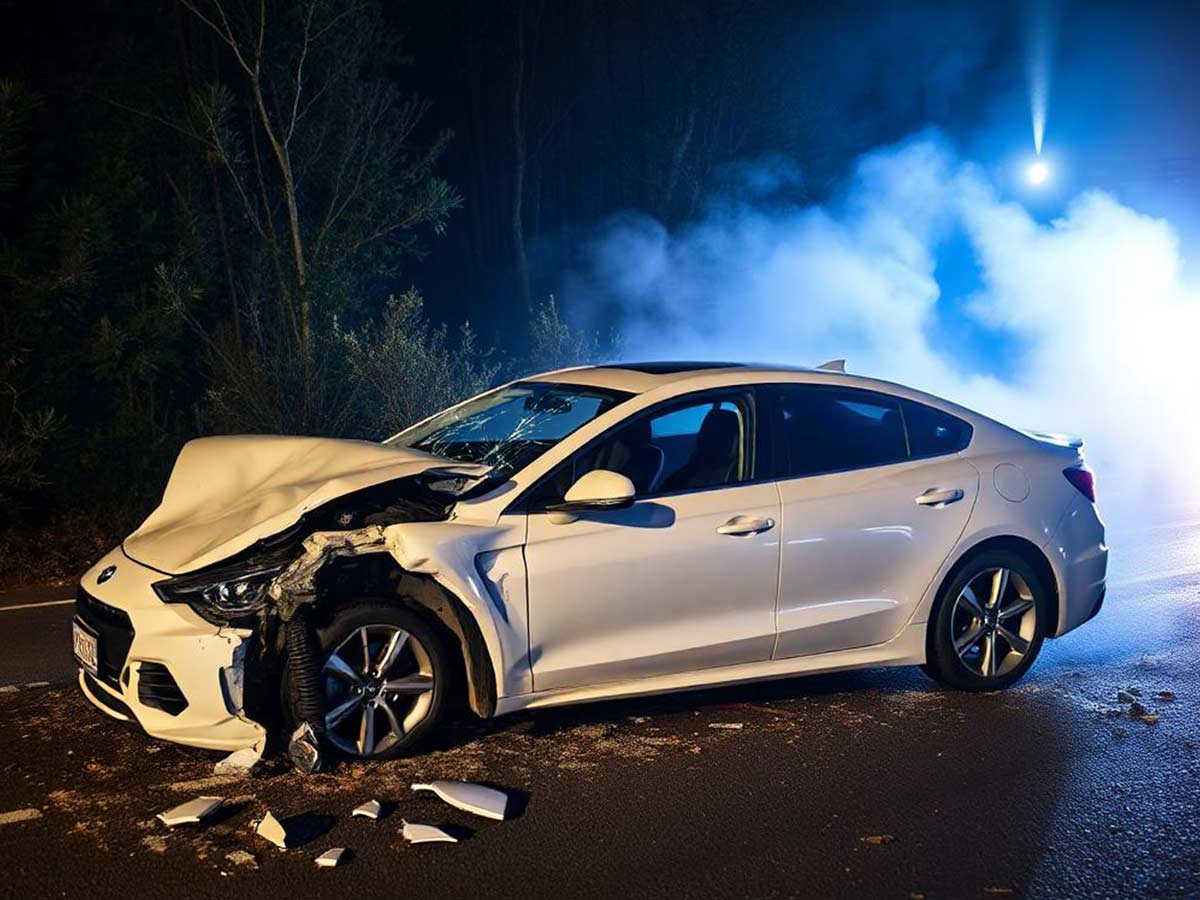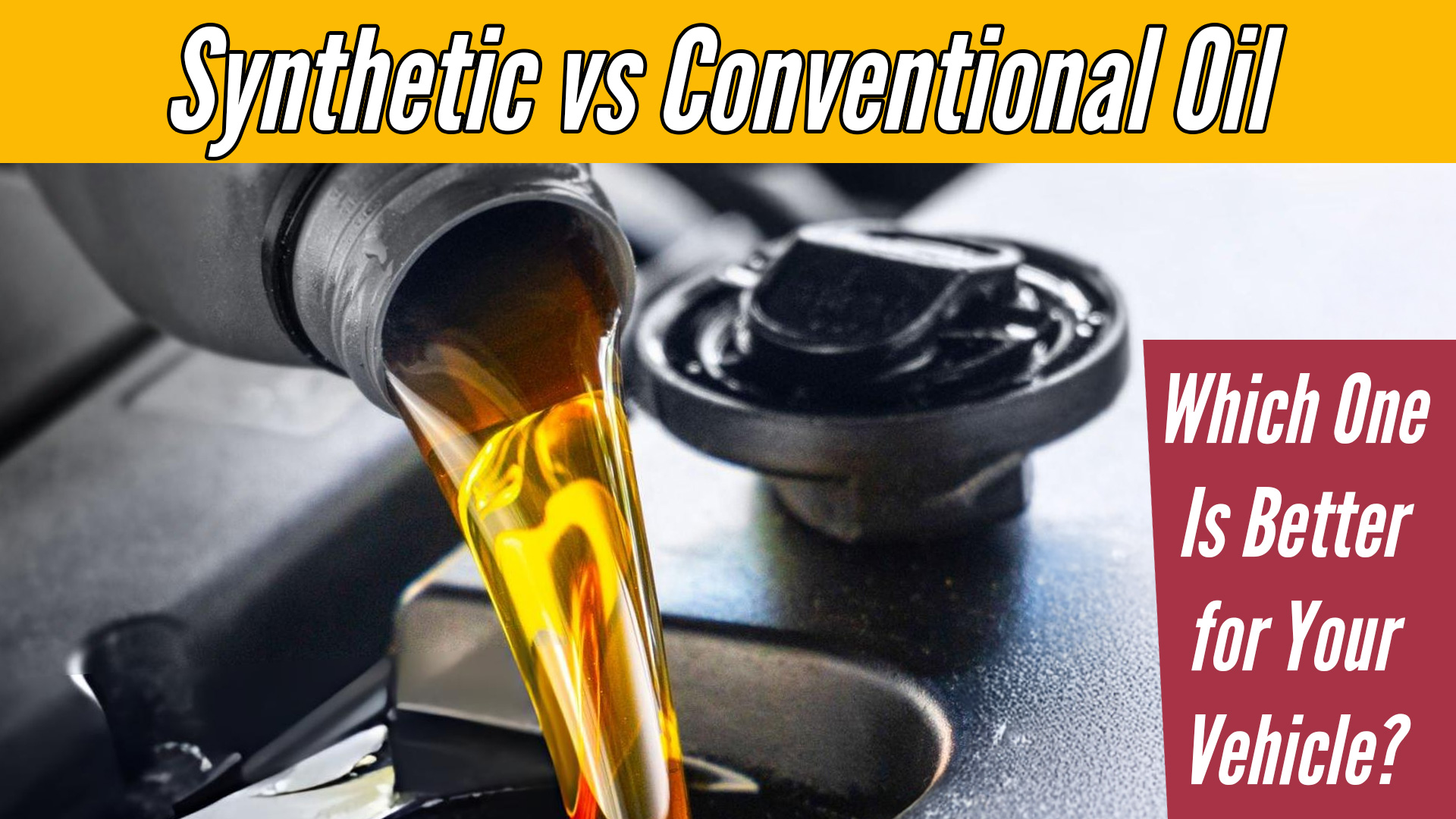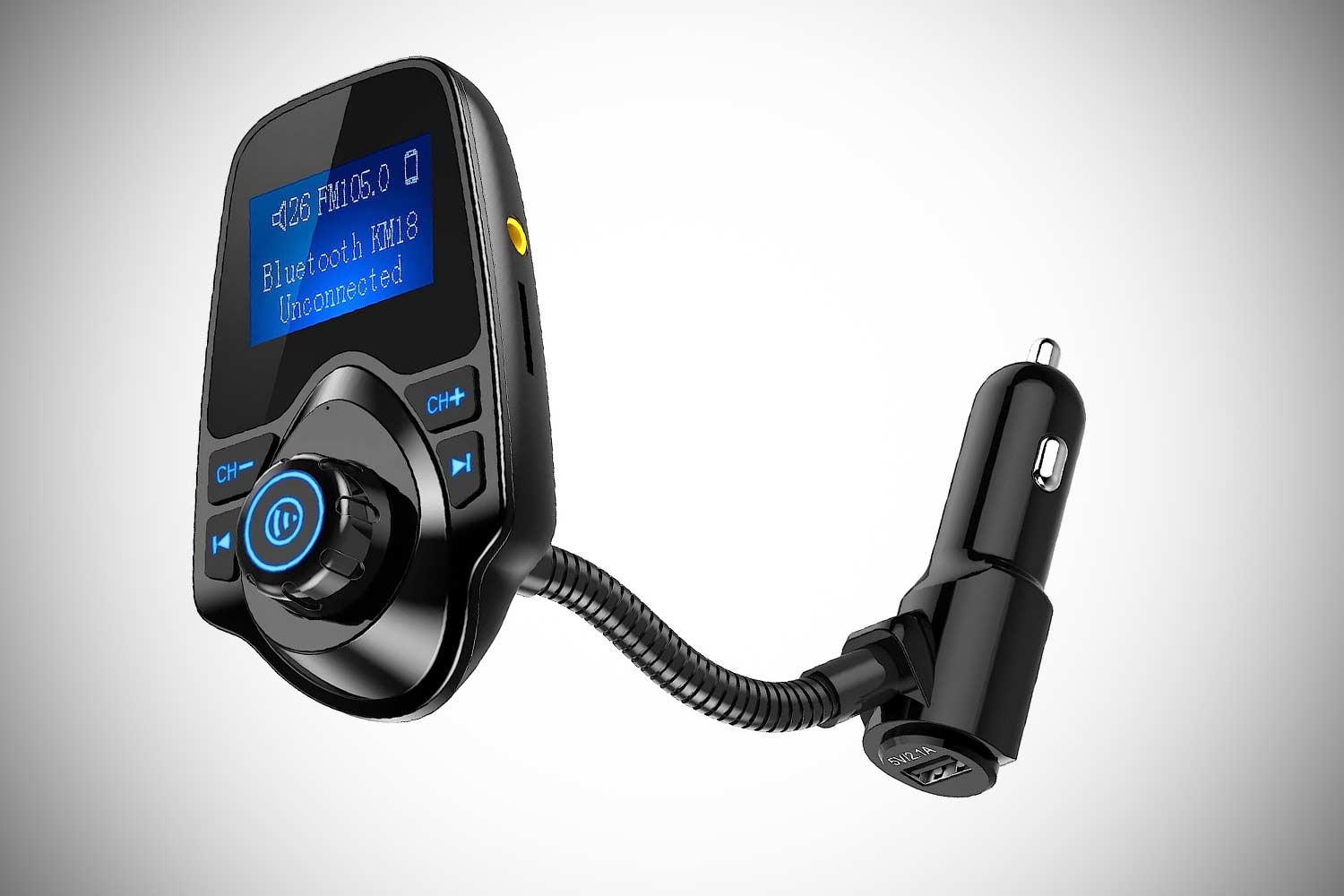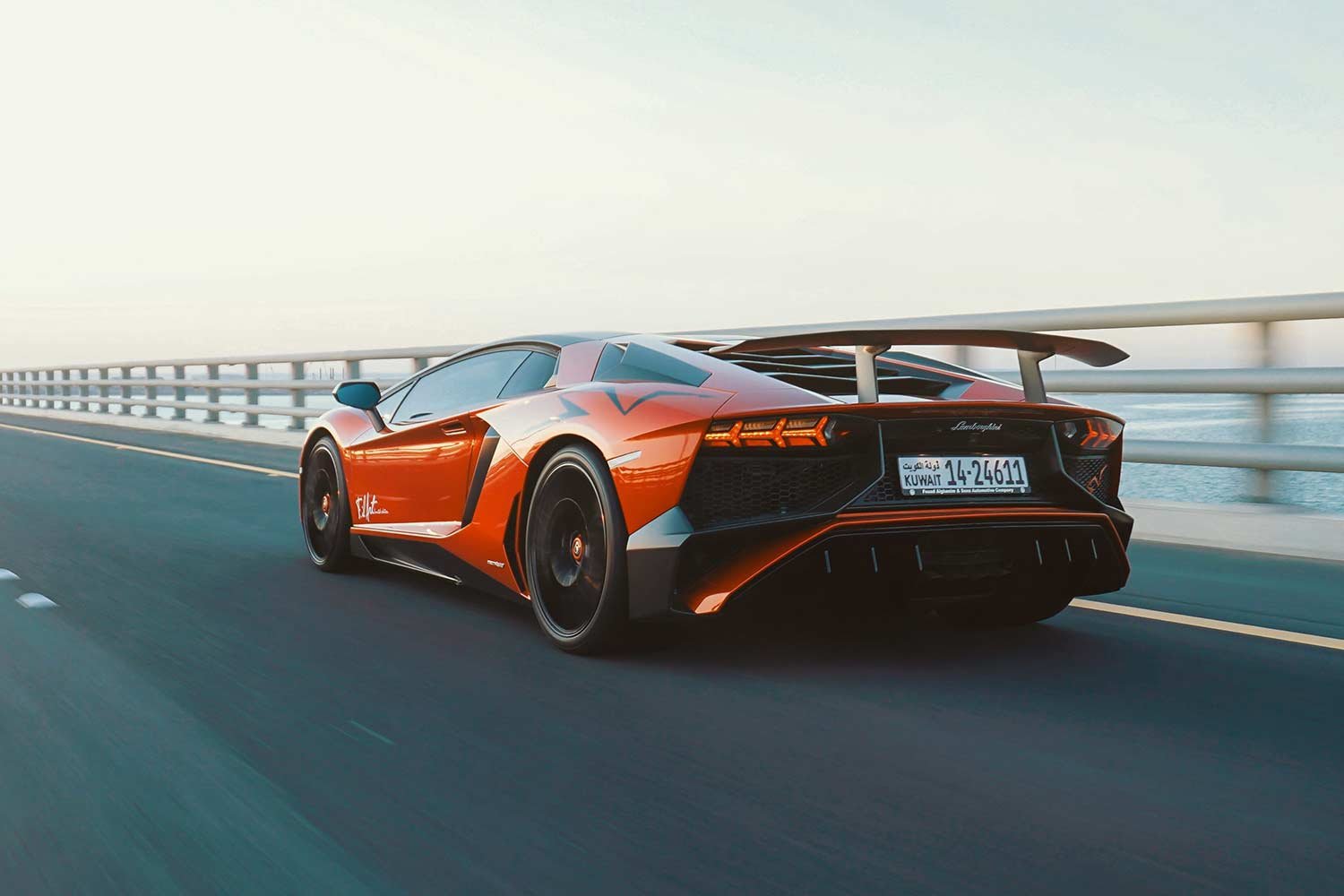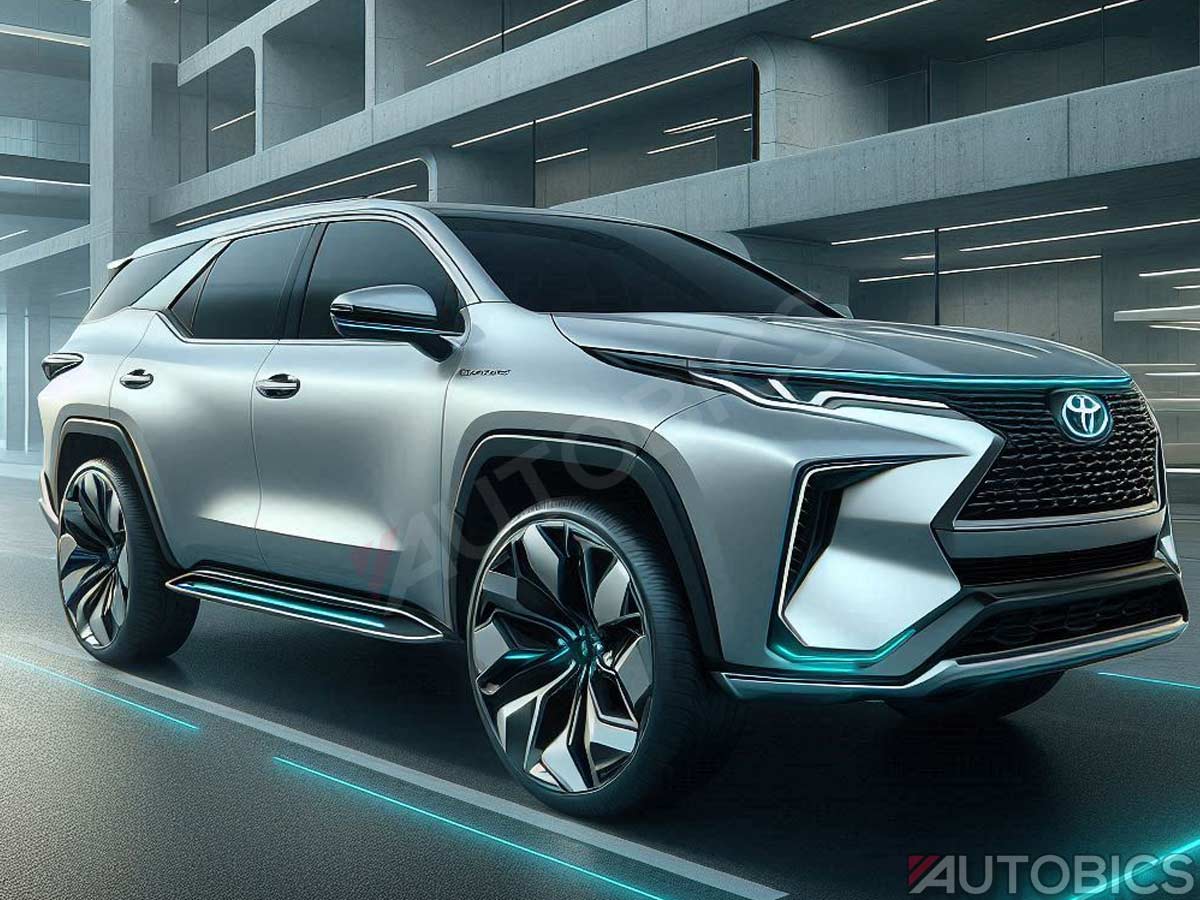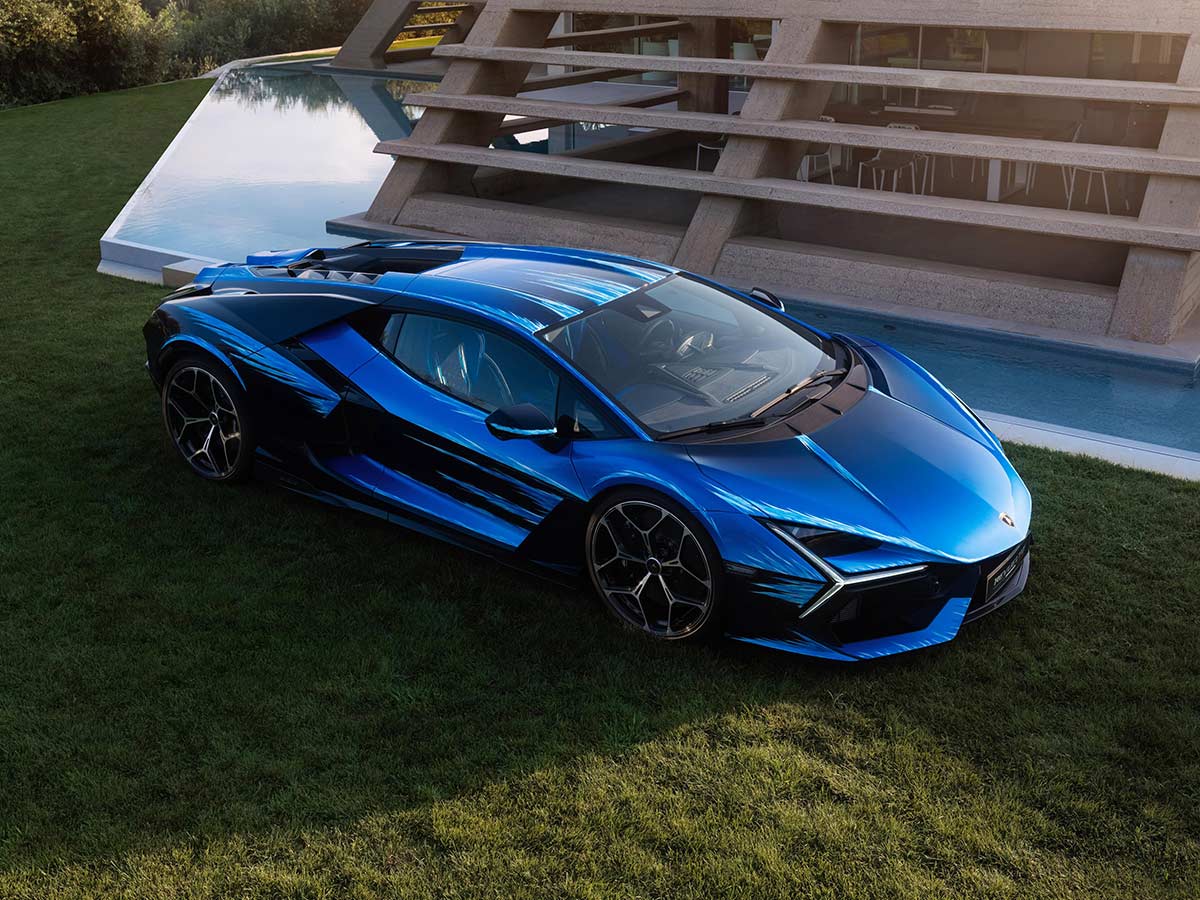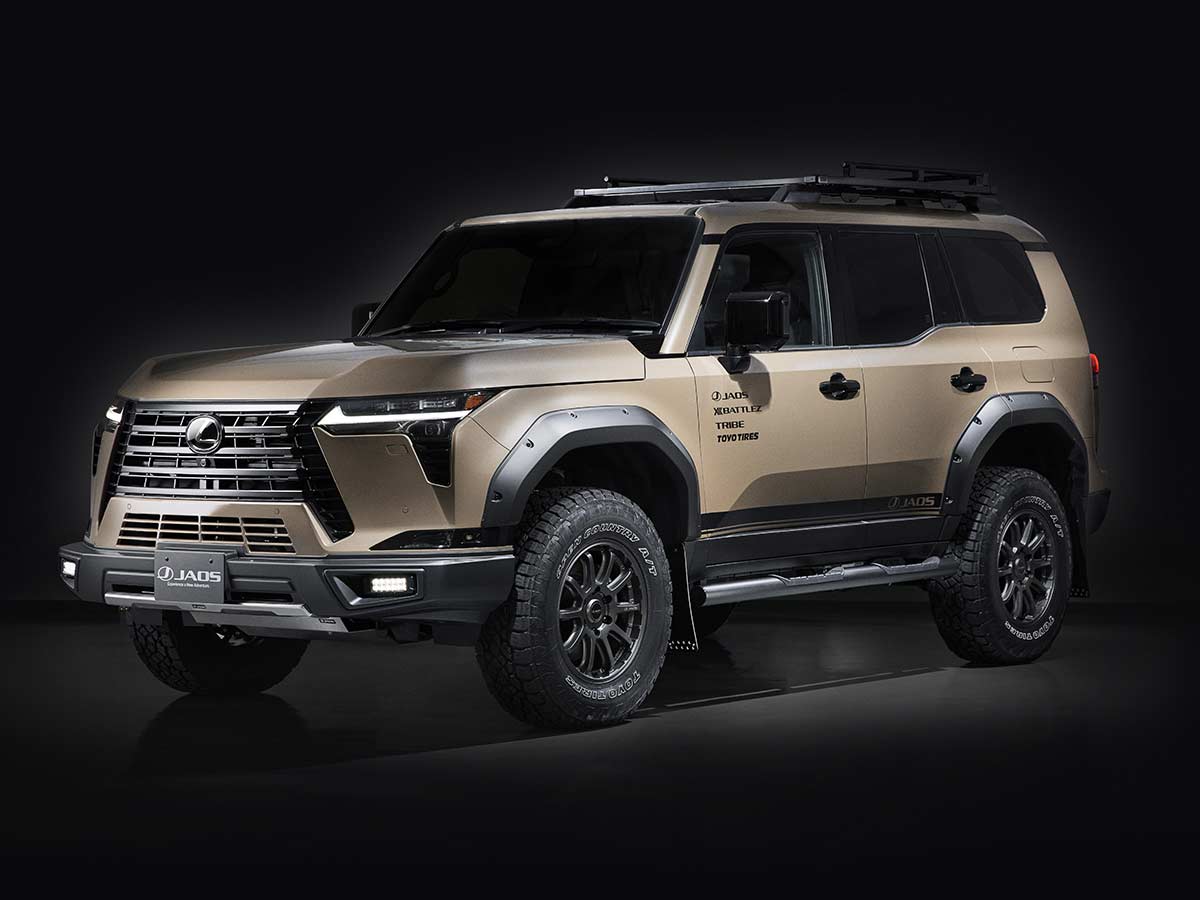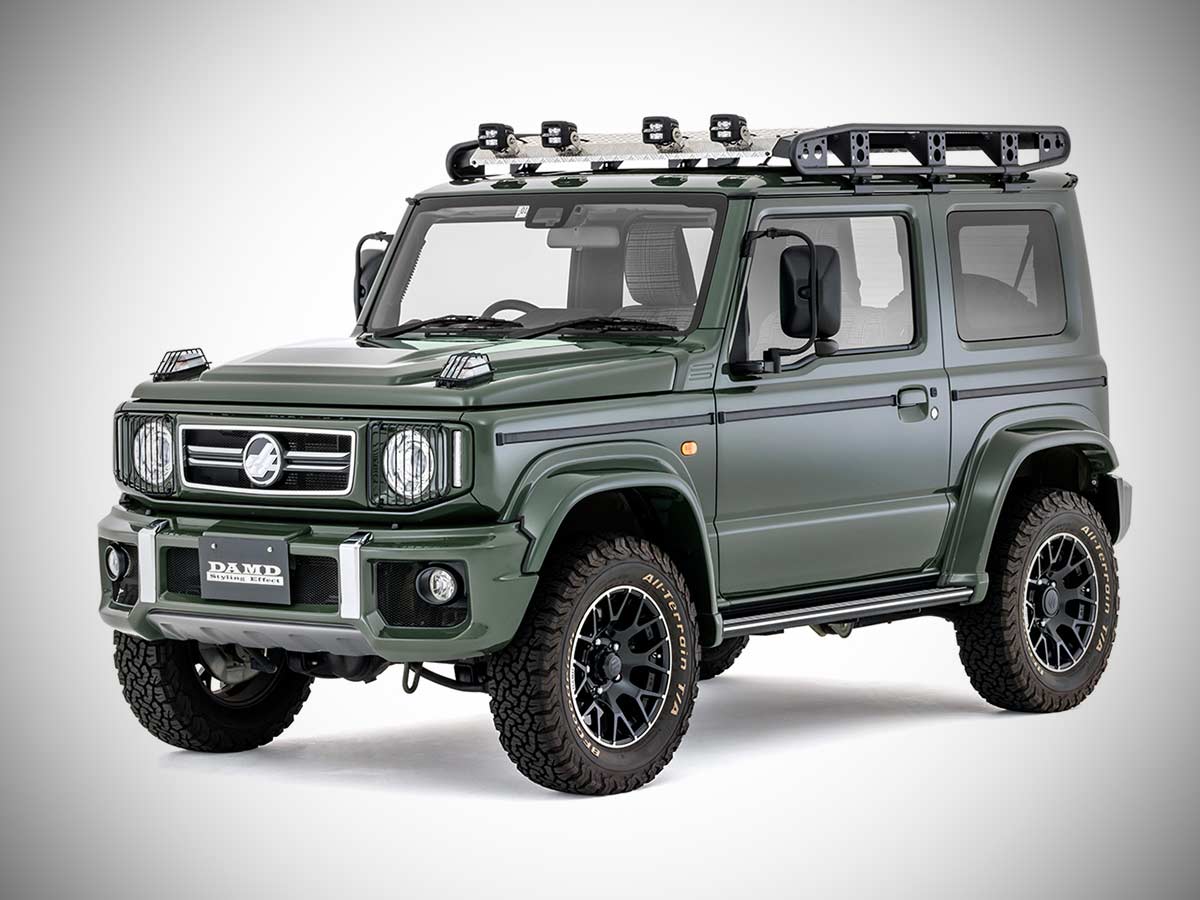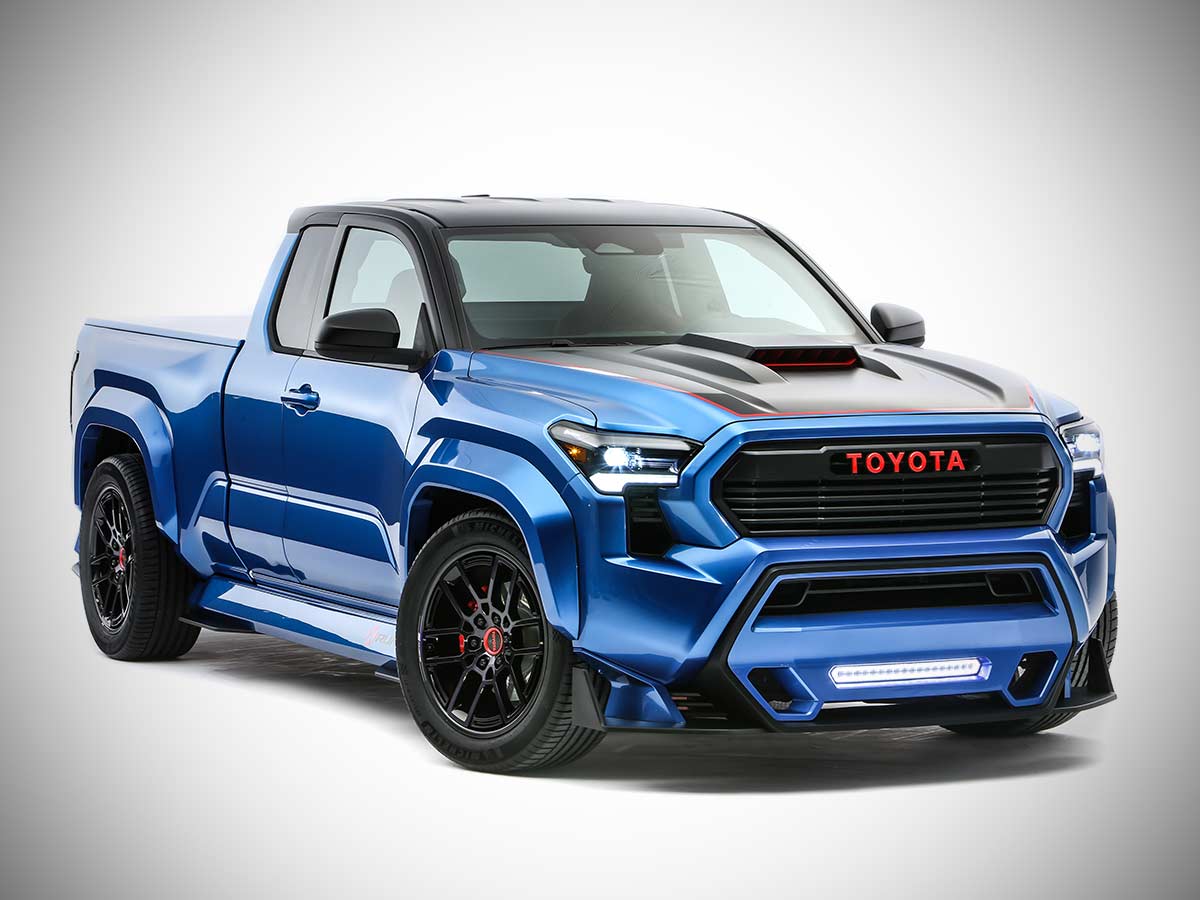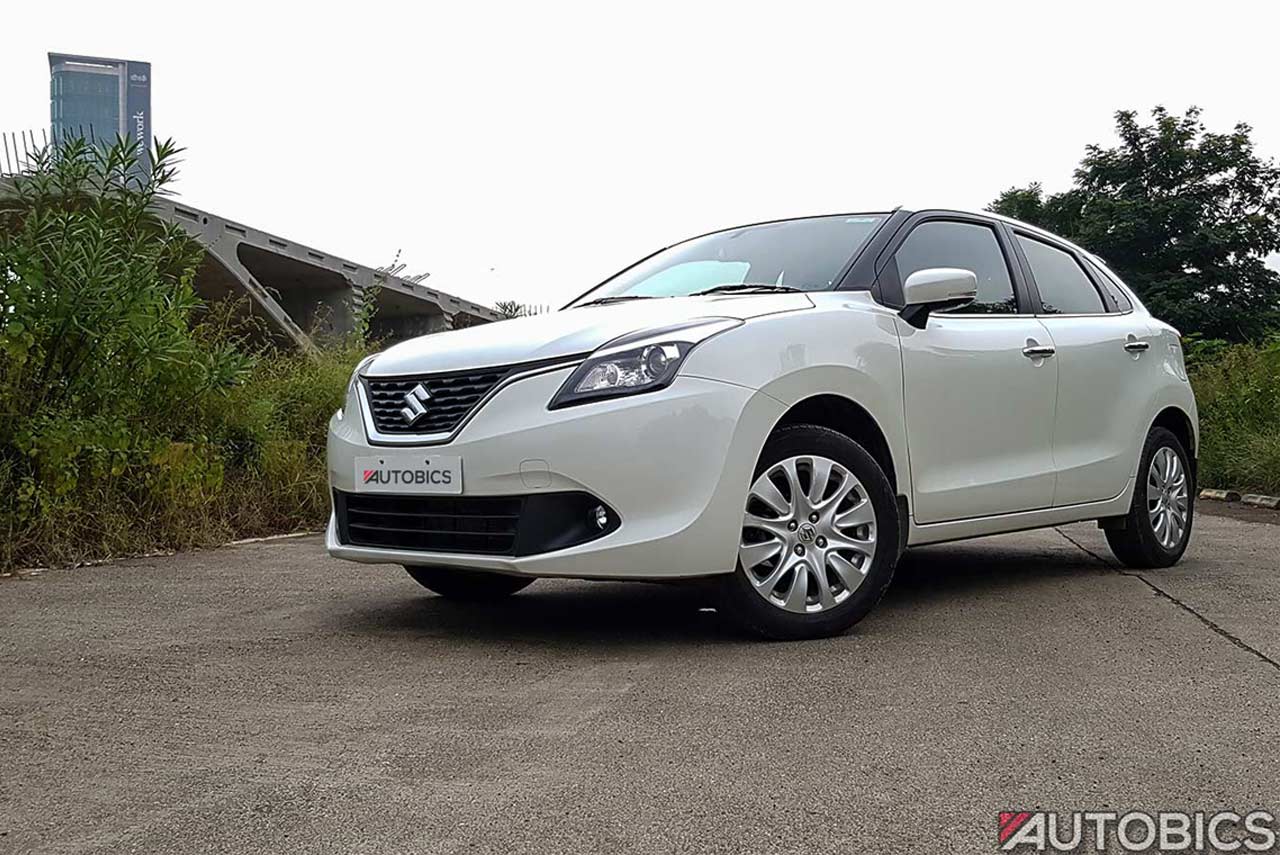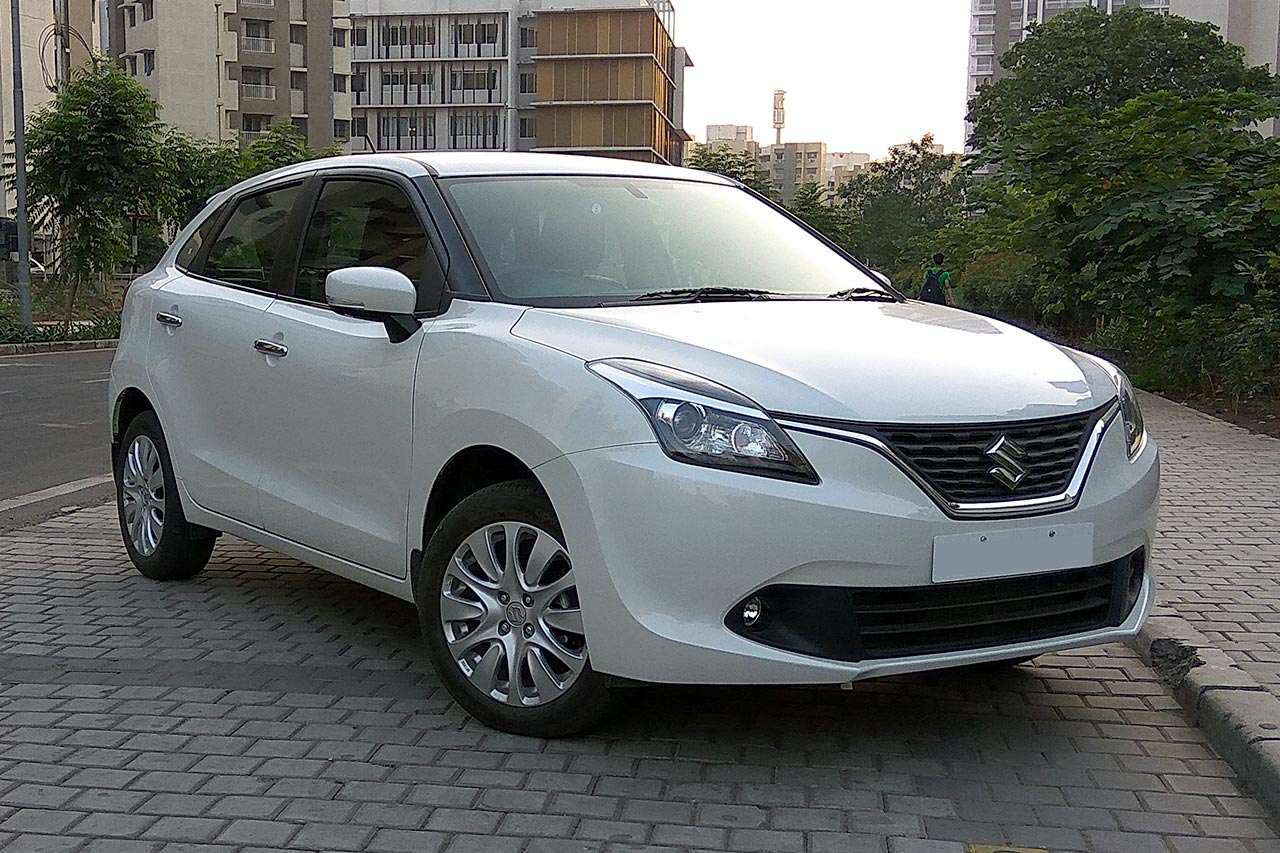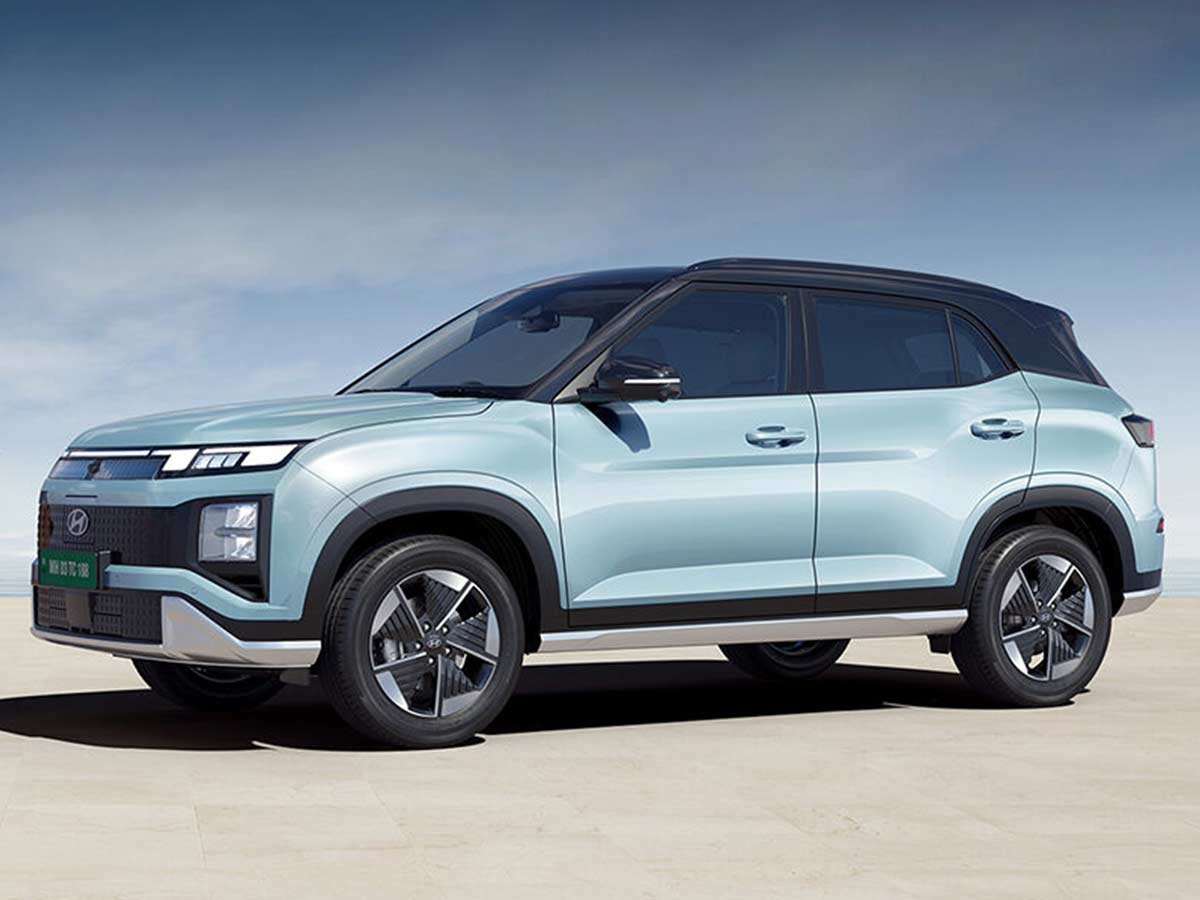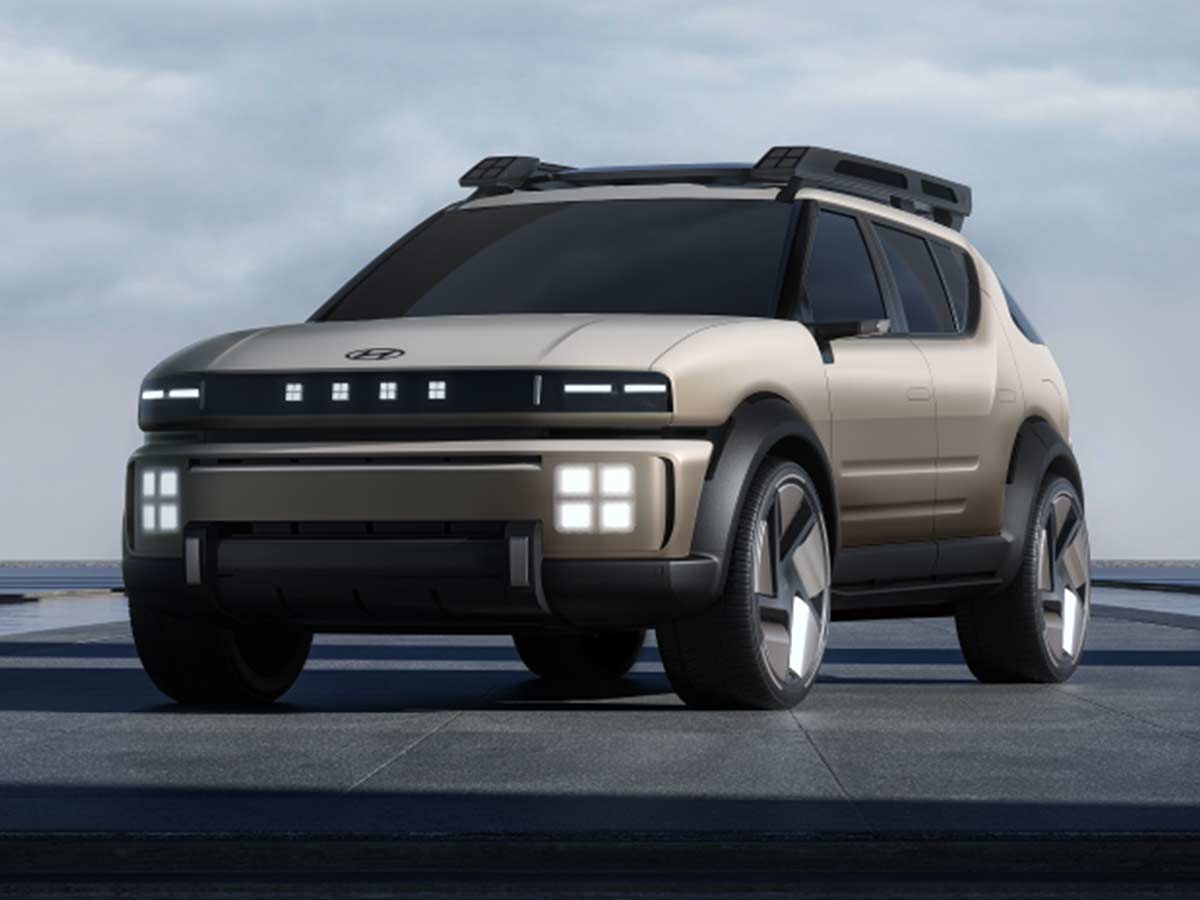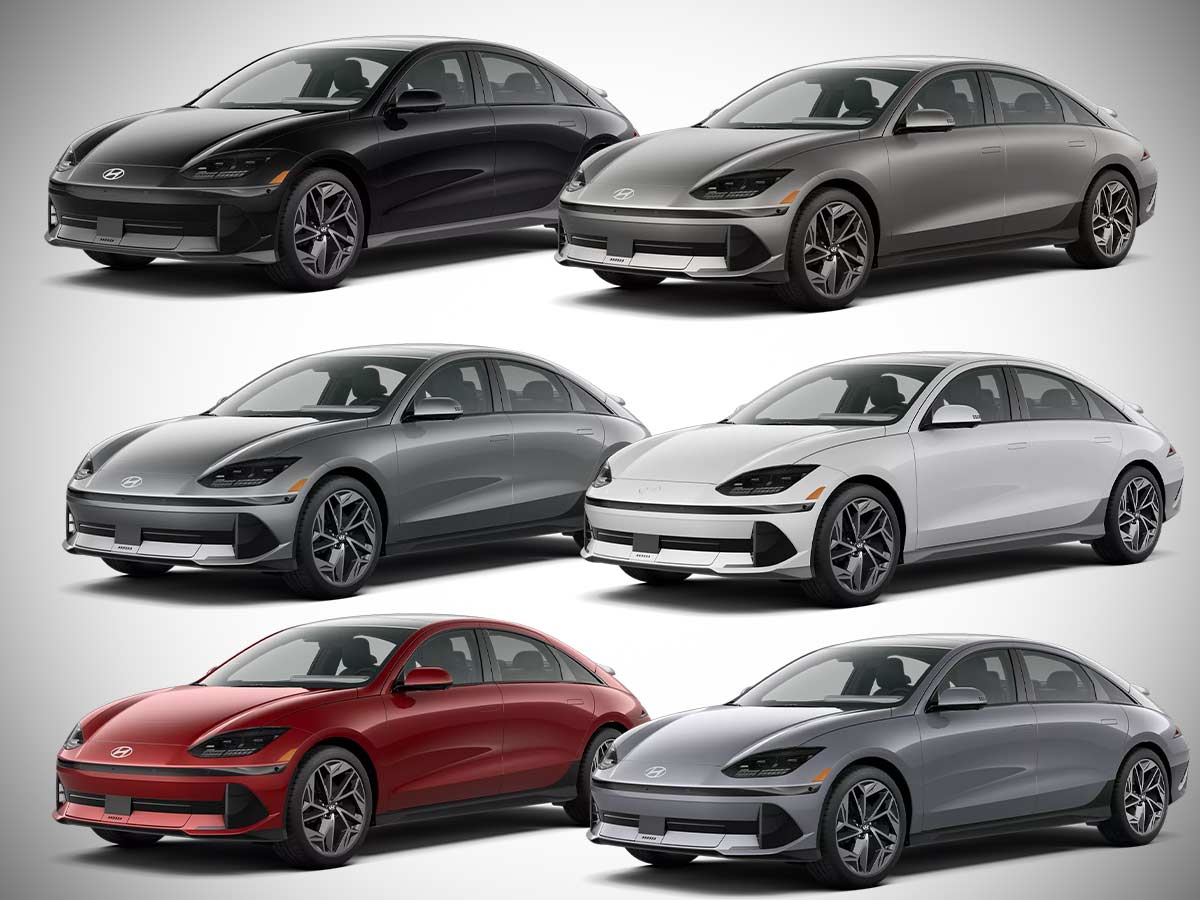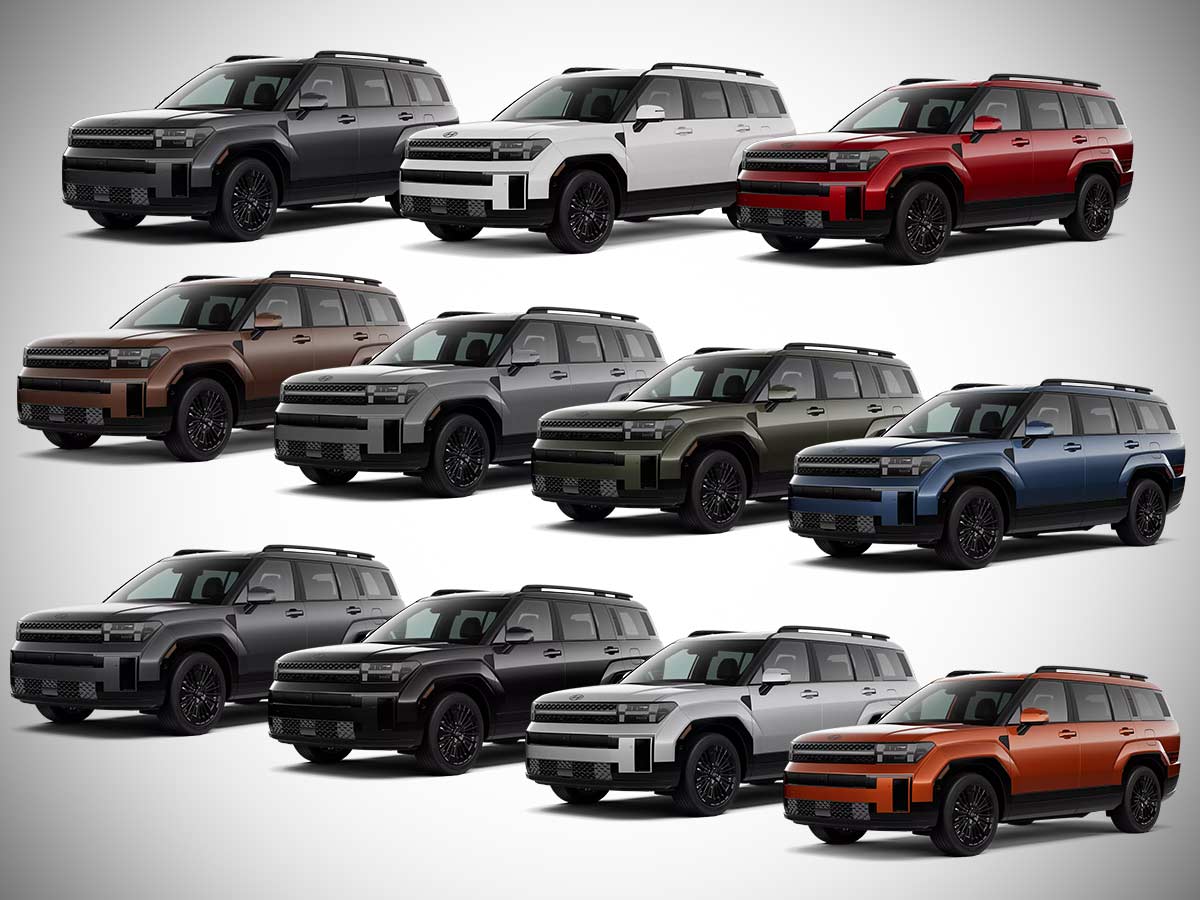Hyundai unveiled its thoroughly refreshed 2025 Tucson SUV in a North American reveal at the New York International Auto Show. The updated 2025 Tucson continues to build upon its successful Sensuous Sportiness design identity with a more commanding front and rear appearance, updated lighting signatures, new alloy wheel designs and a significantly redesigned interior. A plethora of new and enhanced driver comfort, convenience and safety technologies have also been added. 2025 Tucson 2.5L models will arrive at U.S. dealerships in June, while 1.6L turbo hybrid and plug-in hybrid models will be available late summer.
>>> Great Discounts on Car & Bike Accessories <<<
Exterior design enhancements
The 2025 Tucson presents an evocative, bold appearance with ‘Parametric Dynamics’ design language and kinetic, jewel-like surface detailing that ensures its distinct identity in today’s crowded SUV marketplace. For 2025, revised exterior styling imbues Tucson with a more planted, substantial look thanks to a new grille, redesigned front and rear bumper fascia, and an updated daytime running light signature. New alloy wheels, anodized aluminum badging, and a 75-mm longer rear wiper blade for improved visibility round out these purposeful changes.
The front fascia styling enhancements incorporate stronger vertical grille elements for a more rugged, stable appearance. Tucson’s iconic daytime running light signature has been simplified from ten lighting areas to eight larger units for an even bolder presence, day, or night. New bridge-type raised roof side rails add capability and ruggedness to the outdoors-oriented XRT.
Redesigned interior and infotainment
The 2025 Tucson’s interior may feature the biggest upgrades of all, thanks to a more open-feeling design and a higher-tech, yet easier-to-use infotainment interface. This cabin glow-up incorporates a redesigned panoramic curved display that integrates an available 12.3-inch digital instrument cluster and an enlarged 12.3-inch infotainment display. A redesigned center stack includes the addition of supplementary knobs and switchgear for frequent-use driver controls including audio volume and tuning, along with select HVAC controls for greatly improved ergonomics. The center console, steering wheel and door panel accents have also been redesigned for both fresh appeal and enhanced usability. A new dashboard tray located above the glovebox adds even more storage space for front-seat passengers.
On premium models with shift-by-wire function, the transmission is now controlled by a column-mounted gear selector, liberating more usable space in the center console area. A larger, 12.3-inch hoodless infotainment touchscreen has been added to all trims. This system features faster processing speeds, enhanced colors, and sharper graphics along with more intuitive layouts for improved ease of use. The wireless device quick-charging pad (15-watt) has also moved to a more convenient driver access position.
For enhanced passenger comfort, Limited models include acoustic laminated front side windows to reduce interior noise. Available heated steering wheel and rear seat heaters now offer additional temperature settings for more precise control and comfort. XRT models add XRT debossing on the front seatbacks.
Human-centric technology integration
For 2025, the new Tucson can now make convenient updates to various vehicle systems, including powertrain, safety, multimedia, and mapping systems (when equipped with navigation) via over-the-air (OTA) updates.
Tucson’s available integrated memory system includes both power driver’s seat and outside mirror settings for greater convenience. Front passengers now have access to USB-C data and charging ports with improved 27-watt charging capability. Rear passengers also receive standard USB-C charging ports. For 2025, Wireless Android Auto and Apple CarPlay integration are now standard on all Tucson models. What’s more, a new 12-inch color Head-Up Display (HUD) with premium graphics is also available. Impressively, the HUD even displays turn-by-turn directions via CarPlay and Android Auto when equipped with the onboard navigation system. Further, a newly available fingerprint authentication sensor on the instrument cluster provides a new level of security and convenience. Its biometric authentication can allow the driver to securely start and drive the Tucson without a smart key.
Tucson’s proximity-key entry with push-button start is now standard, while available Digital Key 2 Premium provides convenient, key-fob-free vehicle access. This system allows door locking, unlocking and vehicle engine start all without needing to take your phone out of your pocket or purse using Bluetooth Low Energy, Advanced NFC, and Ultra-Wideband technologies. It even makes it easy to share temporary keys digitally with family, friends, or clients. In addition, SiriusXM satellite capable radio is standard and all Hyundai Bluelink+ services are now offered complimentary with purchase. With Bluelink+ key safety and maintenance features, such as Auto Collision Assistance, SOS Assistance, Remote Diagnostics, Maintenance Reminders, over-the-air ECU updates and convenient vehicle remote features are available with no trial period, and for the life of the supporting technology and 4G LTE network. Hyundai Pay, which enables paying for parking and fueling from inside the vehicle is available, as is a WiFi hotspot4 that can connect a total of five devices at once for full-family connectivity. The HVAC system now adds automatic fan ventilation after A/C system shutdown to help reduce condensation and odors caused by excessive humidity.
Enhanced safety
For 2025, Tucson adds Forward Attention Warning (FAW), which utilizes an infrared camera mounted on the steering column to help track the driver’s eye gaze and monitor attention levels to help ensure safe driving. Available Smart Cruise Control 2 continually assesses driver alertness. If the driver is found to be unresponsive, the system can even help safely bring the vehicle to a stop, activating the hazard lights and the electronic parking brake once the vehicle is stopped. Additionally, rear outboard passenger seatbelts now feature standard pretensioners and load limiters.
Diverse Smartstream powertrain family line-up
The 2025 Tucson offers a Smartstream 2.5-liter, direct-injected and multi-port-injected gasoline engine as well as available 1.6-liter, direct-injected, turbocharged hybrid and plug-in hybrid powertrains. The Smartstream 2.5-liter four-cylinder engine boasts a generous 187 horsepower at 6,100 rpm and 178 lb.-ft. of torque at 4,000 rpm thanks to high-efficiency combustion. The eight-speed automatic transmission mated to the standard 2.5-liter engine provides quick and crisp shifts for an engaging and efficient driving experience.
Hybrid and plug-in hybrid powertrains
Tucson’s hybrid models provide a balanced combination of fun-to-drive performance and excellent economy compared with some competitors’ pure efficiency focus. 2025 Tucson hybrid and plug-in models now offer driver-adjustable levels of regenerative braking for improved control and comfort.
The Hybrid powertrain’s 1.6-liter turbocharged gasoline engine produces an estimated 178 horsepower and 195 lb.-ft. of torque, with an estimated 231 total hybrid system horsepower. This hybrid system also produces a total estimated 258 lb.-ft. of torque thanks to a powerful 47.7-kW electric motor (formerly 44.2 kW) and a 1.49-kWh lithium-ion battery pack. Tucson Hybrid delivers its abundant power through a specially tuned six-speed automatic transmission for smooth, quiet, and efficient performance.
Plug-In Hybrid models feature a high-output 1.6-liter turbocharged, direct-injected four coupled with a specially tuned six-speed automatic transmission and a more powerful 72.0-kW electric motor (increased from 66.9 kW). Plug-in Hybrid total system output is rated at a robust 268 horsepower and 258 lb.-ft. of torque. The Plug-In Hybrid battery is larger than the Hybrid pack, offering 13.8 kWh of lithium-ion power. Level 2 AC charging takes fewer than two hours to recharge the PHEV’s battery using its 7.2-kW onboard charger.
Shared hybrid and plug-in hybrid technologies
Hybrid and plug-in hybrid models include standard HTRAC all-wheel drive (AWD) to meet the needs of eco-minded buyers seeking enhanced capability in inclement weather and limited-traction situations. Driver-selectable HTRAC Normal, Sport, Snow, and (new for 2025) My Drive modes offer confident driver control in a wide range of conditions. Moreover, within the new My Drive sub-menu, a driver-selectable Baby Mode helps reduce the sharpness of initial acceleration, smoothing out driver inputs for a gentler acceleration feeling for passengers. This more serene experience helps reduce potential disturbances that may upset infants or pets. Additionally, a new Green Zone drive mode optimizes pure EV mode for use in urban zones with specific eco-focused requirements. The Sport setting gives Tucson a more agile feel by sending additional torque to the rear wheels for a sporty, dynamic experience.
e-Motion driving dynamics
Tucson Hybrid models feature Hyundai’s e-Motion technology, which precisely applies electric motor torque control according to dynamic inputs and road conditions to improve cornering performance for heightened driver confidence and even more fun-to-drive dynamics.
2025 Hyundai Tucson Images
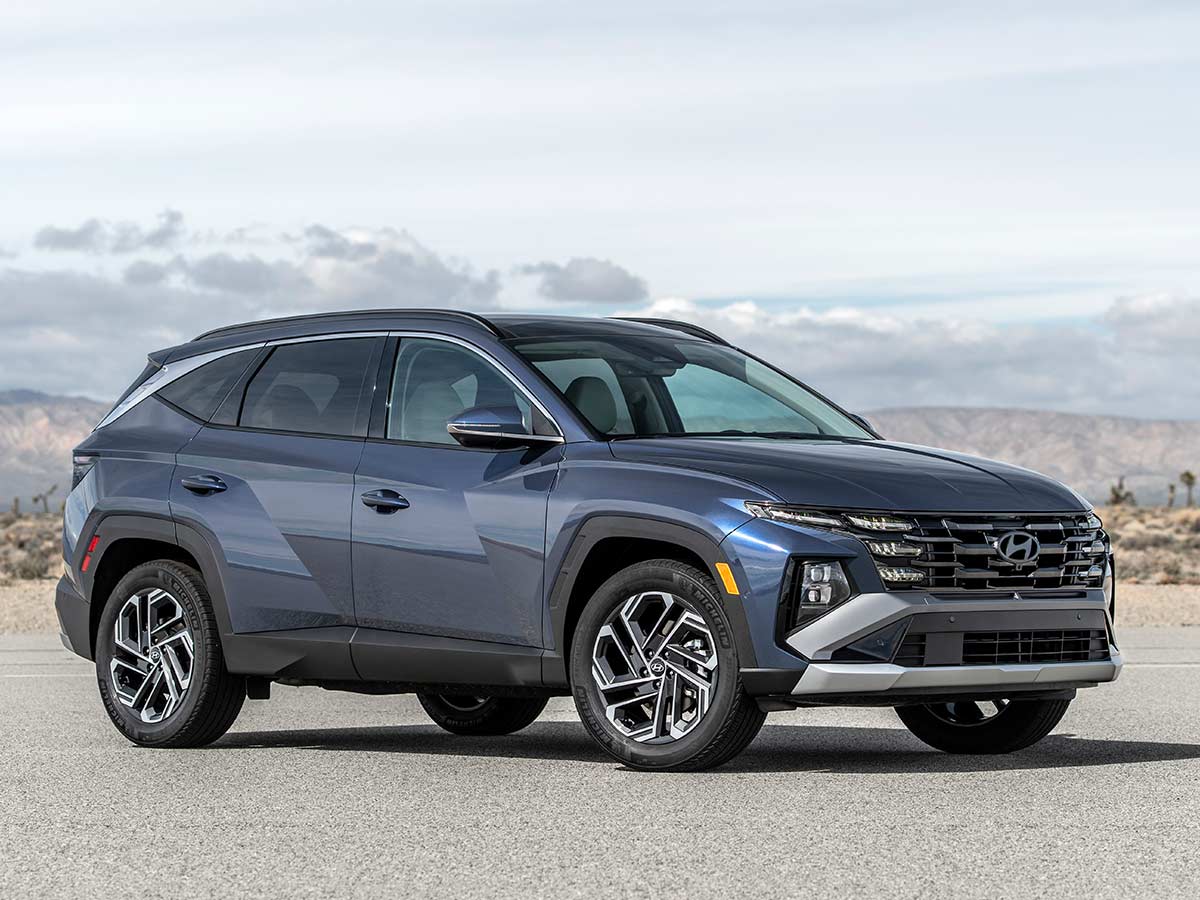
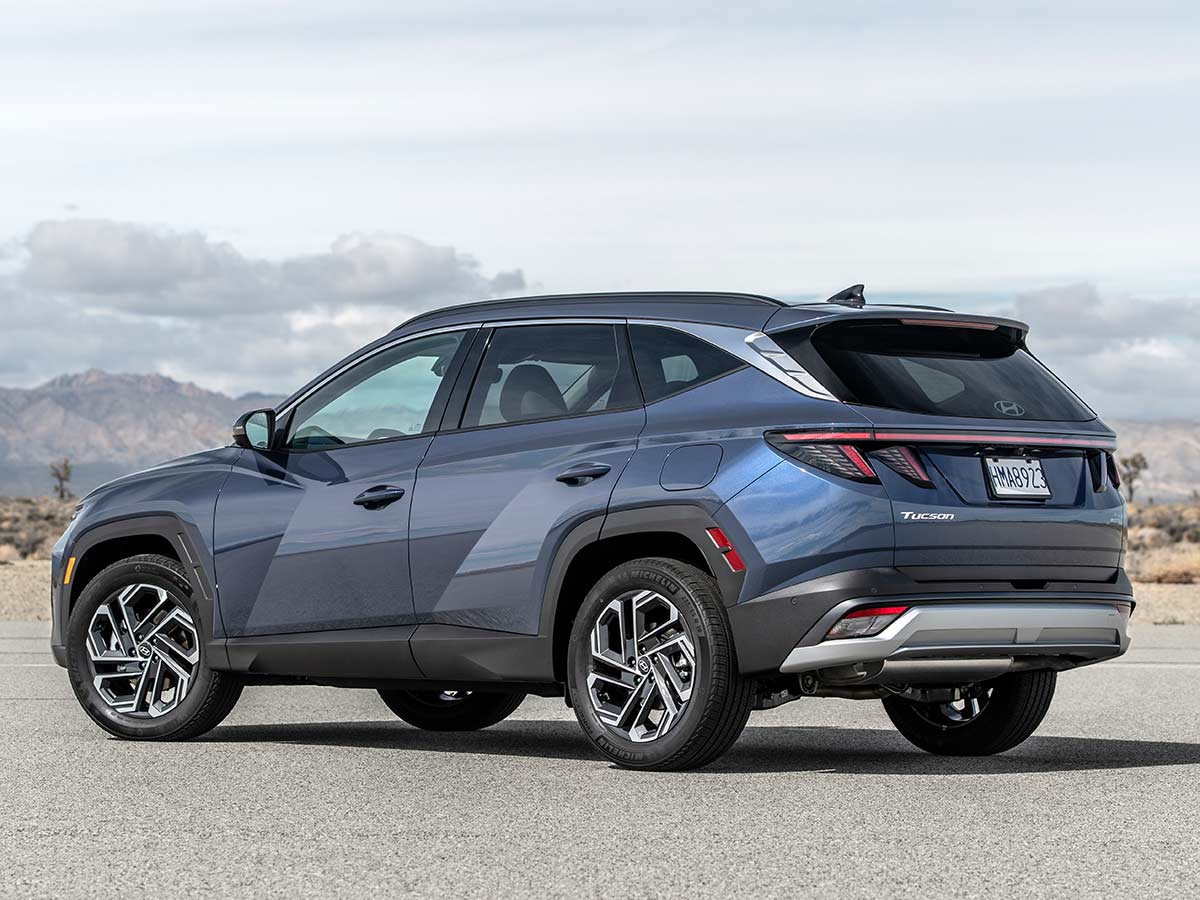



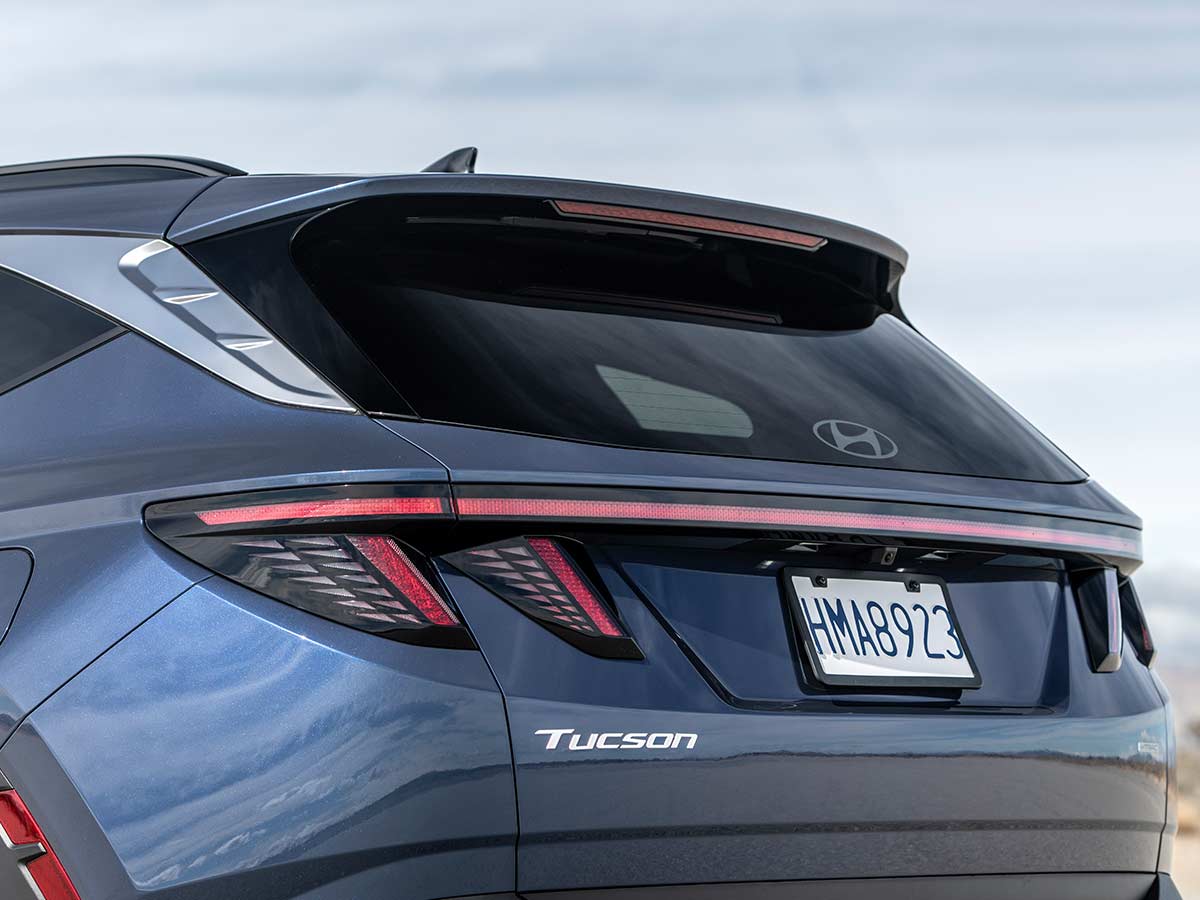



2025 Hyundai Tucson Plug-In Hybrid Images




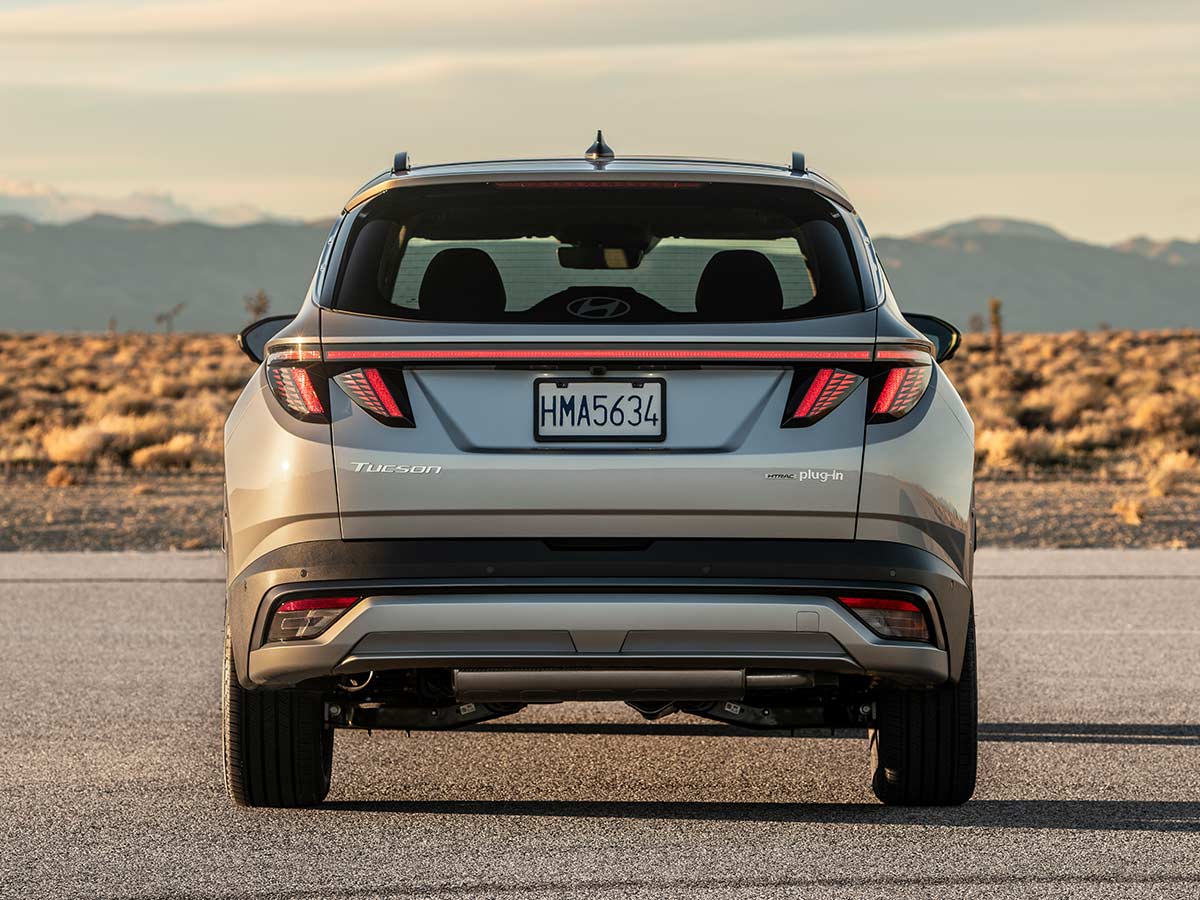
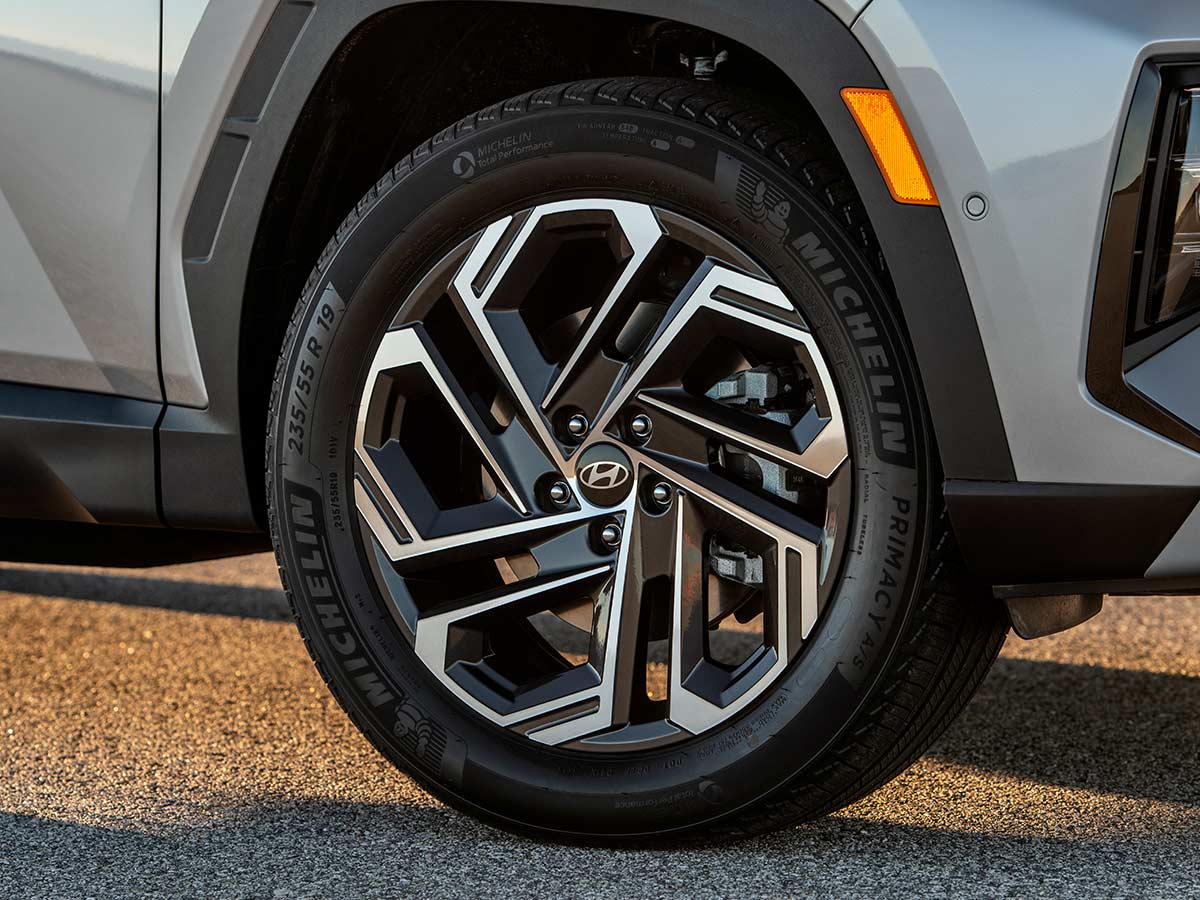



2025 Hyundai Tucson XRT Images

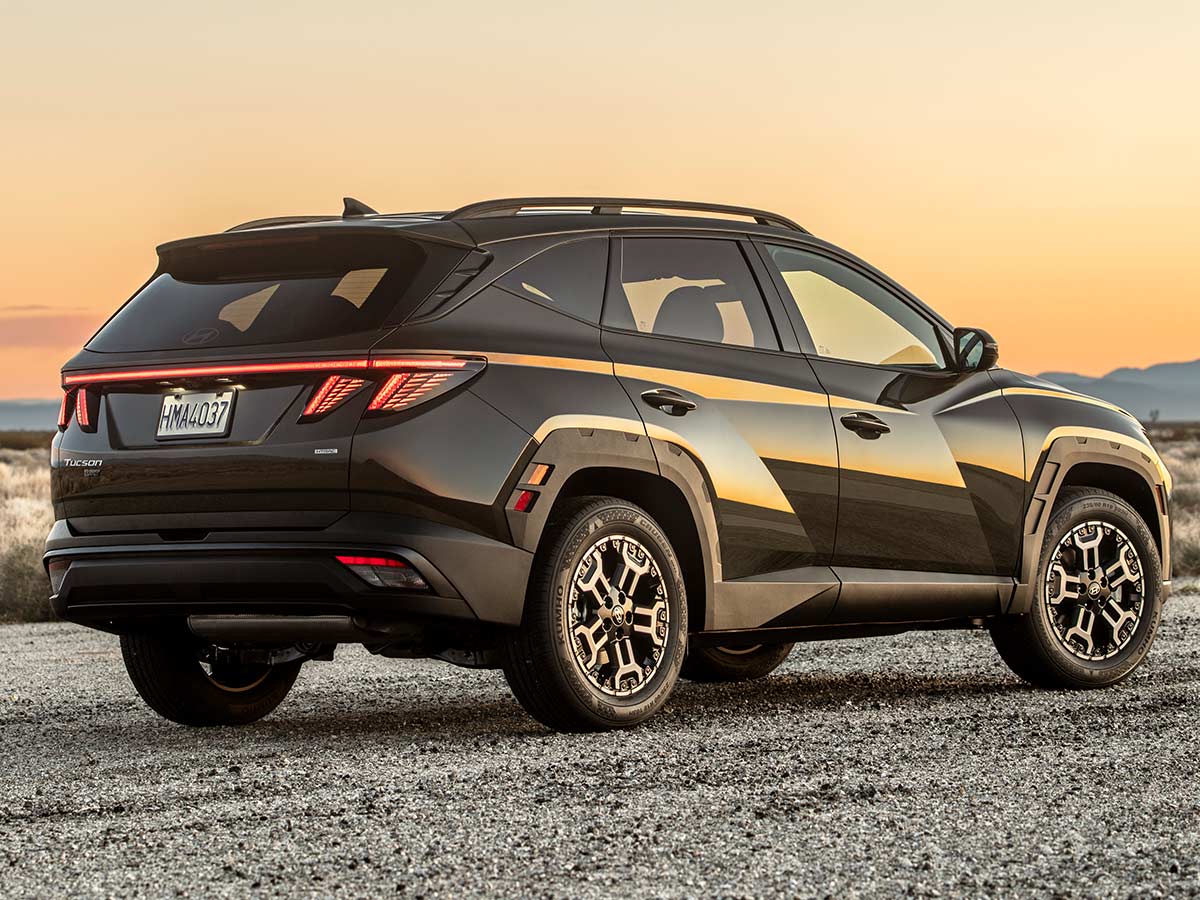
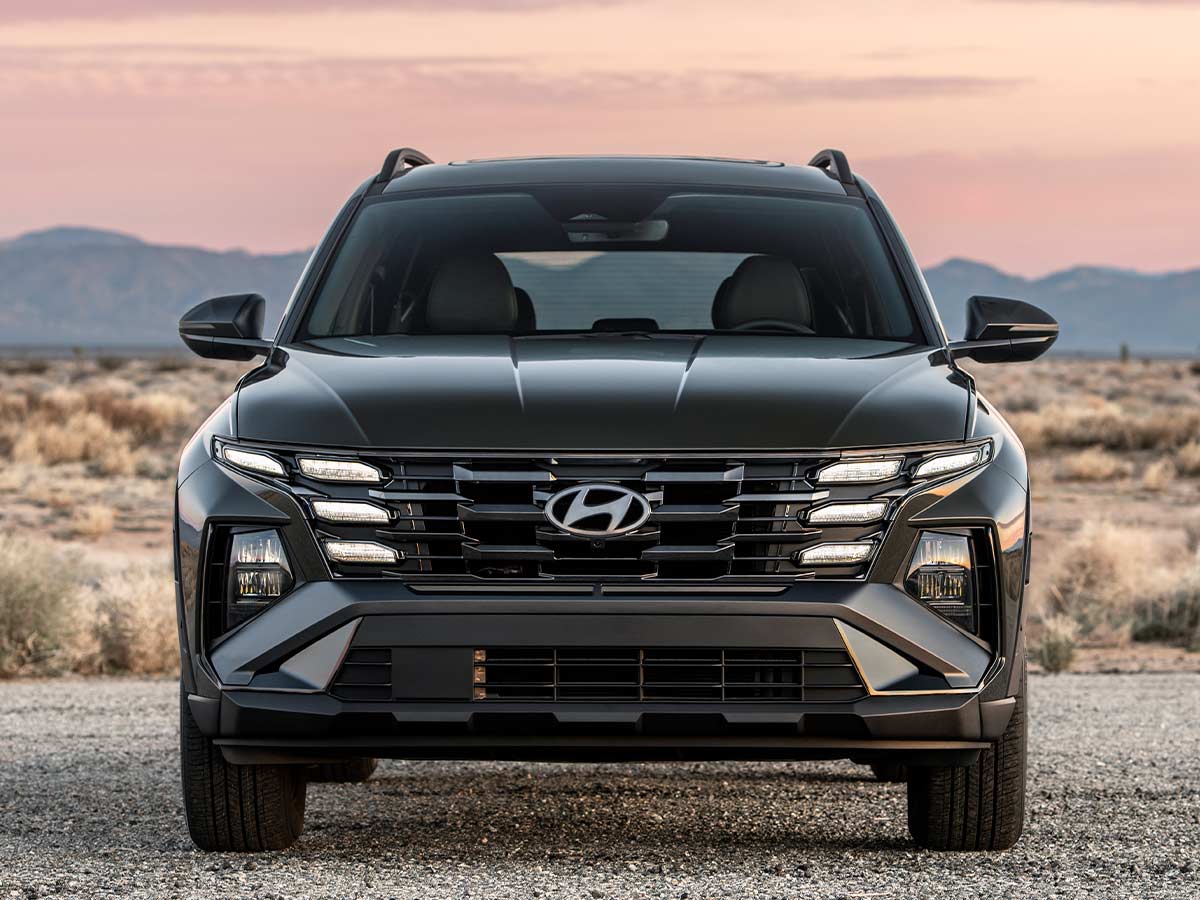

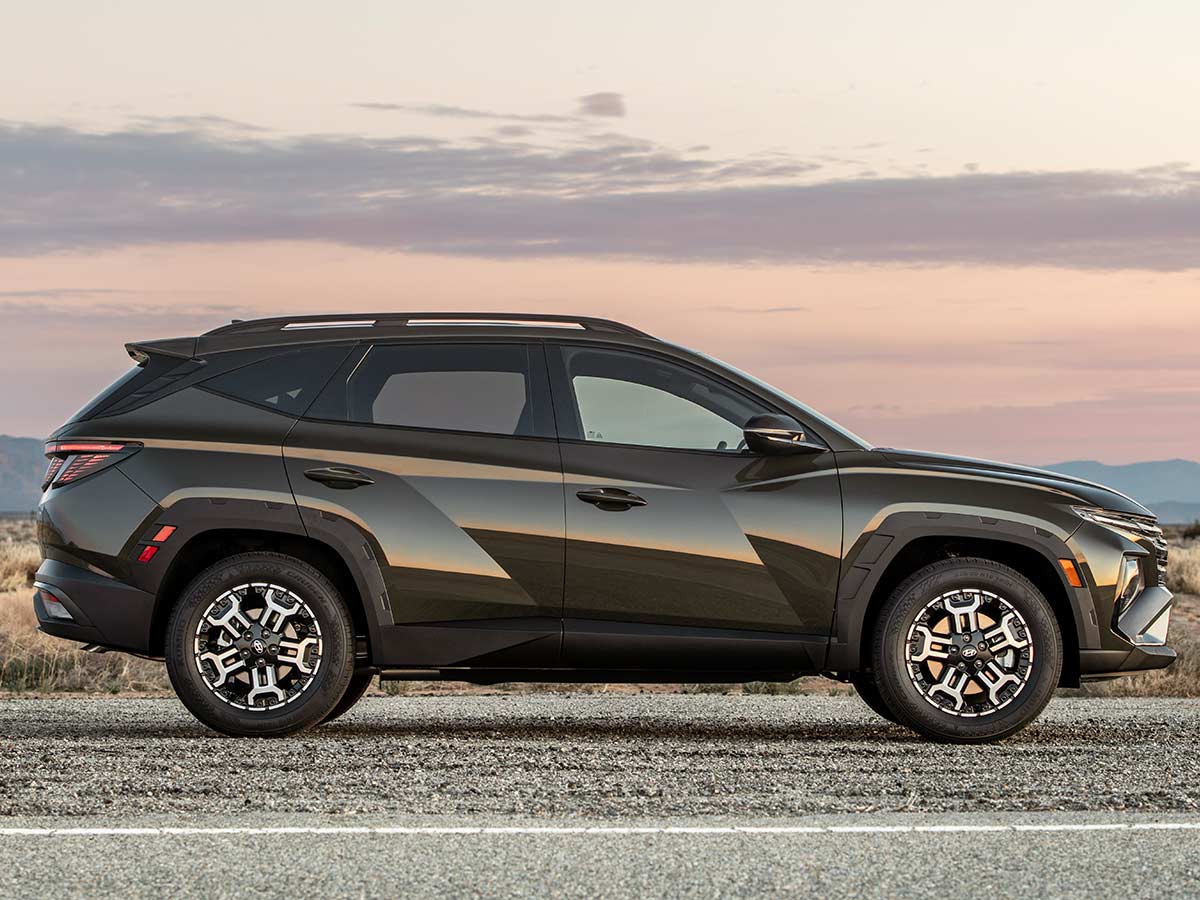

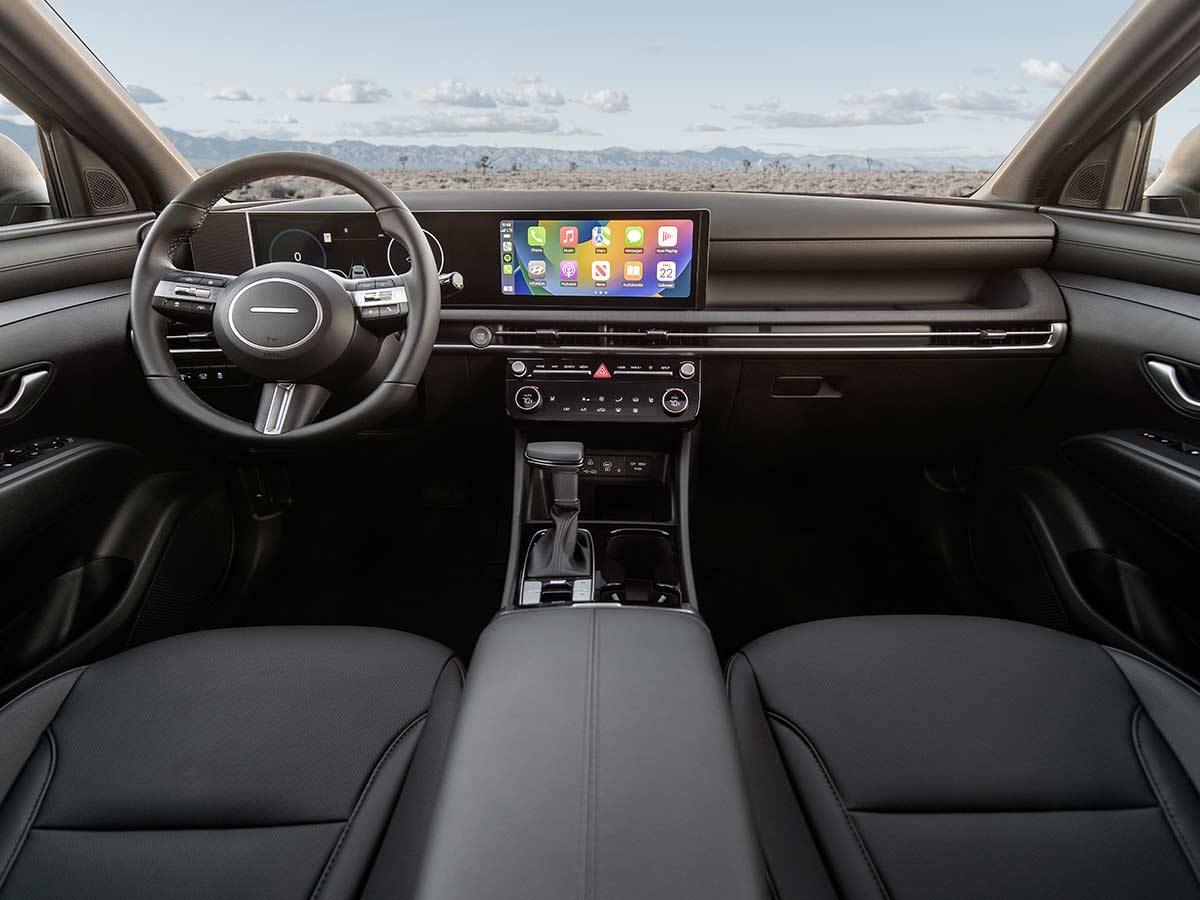

2025 Hyundai Tucson N-Line Images


